

Artists - A-H
- & Young
- .38 Special
- Aaron Lewis
- Aaron Neville
Artists - I-P
- Iron Butterfly
- Iron Maiden
- Izzy Stradlin
Artists - Q-Z
- Queens of the Stone Age
- Queensrÿche
- Classic Rock

- Keyboardist Jim Beard, Known for His...
- 12 Rock Legends Who Openly Dislike...
- 10 Rock Stars Who Can’t Stand...

- Legendary Motorhead Frontman, Lemmy, To Be...
- Happy 76th Birthday Tony Iommi: How...
- Metallica Secures Best Metal Performance at...

- Unveiling Stevie Ray Vaughan’s Top 10...
- Album Review: “Two Steps From The...
- The Facts In The Early Life...
The History Of Journey’s Music
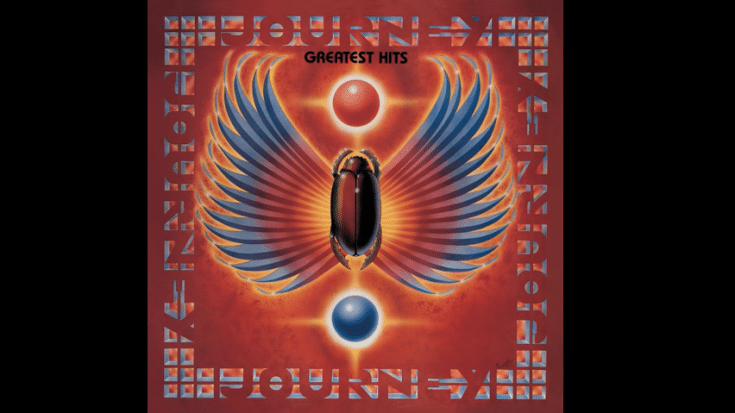
via journey/YouTube
A Long Way To The Top
Unlike other bands from the 1970s, Journey had a pretty weak start in the music industry and it took them years before they broke into mainstream and got the recognition they deserved.
They formed in 1973 and released their first album in 1975 which established their sound that fused jazz and progressive rock. It didn’t work well for them though – at least not commercially.
Guitarist Neal Schon recalls, “I still think some of the stuff we did then was great. Some of it was self-indulgent, just jamming for ourselves, but I also think a lot of other things hurt us in the early days. It took a while for the politics to sort of shape up.”
They opened for popular rock acts like Black Sabbath, Target, Judas Priest and Emerson, Lake & Palmer but fame still eluded Journey.
When they got singer Steve Perry onboard, it was clear from the get-go that he suited the band perfectly. They changed their musical approach – deciding to move towards a more commercialized sound mixing guitar-driven hard rock with pop. An early progenitor of “arena rock”, they reached their peak between 1978 and the early ’80s.
With Perry’s smooth tenor and amazing range, their songs have stood the test of time. Their first LP with him, “Infinity” was an immediate success, peaking at #21 on the US Billboard 200. It spawned the popular singles “Lights” and “Wheel in the Sky” which became a staple in their live shows.
Their fifth studio effort “Evolution” gave them their first top 20 hit in the US Billboard Hot 100 -“Lovin’, Touchin’, Squeezin'” which was partly inspired by one of Perry’s musical influences Sam Cooke. Schon’s heavy guitar work and Perry’s soulful vocals were a match made in music heaven.
They struck gold in 1981 with the release of “Escape” – the first to feature keyboardist Jonathan Cain. The LP gave them four classic hits “Don’t Stop Believin'”, “Who’s Crying Now”, “Still They Ride”, and “Open Arms”.
By this time, they have refined and perfect their sound – infectious melody, heavy riffing, face-melting guitar solos, and Perry’s soaring vocals. It wasn’t all hard rock numbers because even their ballads were something else thanks mostly to Perry’s impeccable and effective delivery.
Riding high on the success of “Escape”, they released “Frontiers” less than two years later which included four more successful singles – “After the Fall”, “Send Her My Love”, “Faithfully”, and “Separate Ways (Worlds Apart)”.
Unfortunately, it was all downhill from there. They had a couple more albums but nothing that touched the greatness of “Escape” and “Frontiers”. That’s not to say their songs are bad, they still had their moments but at the height of their career, they were simply unmatched.
Don’t Miss Out! Sign up for the Latest Updates
I love classic rock.
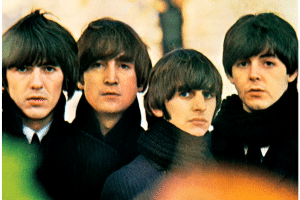
Who Was The Biggest Loser In Beatles History?
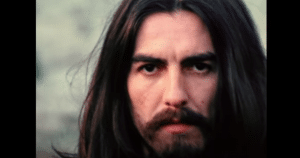
The Darker Side Of 1960s Music Scene
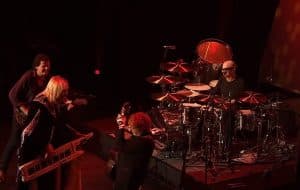
Yes Lineup Evolution Through The Years

The Story Of Why Robert Plant Is Embarrassed Of His 80s…

Ozzy Osbourne Admits There’s Only One Best Guitarist…
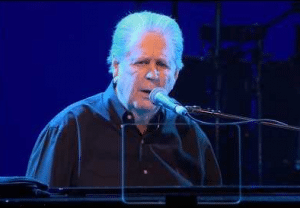
Brian Wilson Has Entered Conservatorship
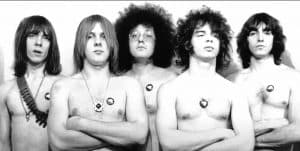
The Last Remaining MC5 Member and Drummer Dennis Thompson…
Premium partners.

Interested in becoming a partner?
Contact us for more info.

© 2024 Society Of Rock
- Terms of Use
- Privacy Policy
Complete List Of All Journey Current And Former Band Members

Feature Photo: Bruce Alan Bennett / Shutterstock.com
I first fell in love with the band Journey when I was in high school and brought the band’s album Infinity when it was first released. Their record company Columbia Records at the time heavily promoted the album. It was Steve Perry’s first recording with the band and Columbia knew they had a hit on their hands. I was blown away by Steve Perry’s voice and completely floored by how great the songs were on the record. Journey became one of the biggest bands of the seventies. They helped define the term “Stadium Rock.” The band has gone through multiple lineup changes over the years. This article takes a look at the revolving door of musicians who have come and gone as members of the band Journey .
The Orginal Journey Band Members
Neal Schon, born on February 27, 1954, in Tinker Air Force Base, Oklahoma, is an American musician best known as the lead guitarist for Journey. He was one of the founding members of the band in 1973. Over the years, Schon played a significant role in shaping the band’s sound and has appeared on every Journey album to date, from their self-titled debut album “Journey” (1975) to their most recent releases. He primarily plays the electric guitar but has been known to play acoustic guitar and perform backing vocals as well. Schon co-wrote some of the band’s most iconic songs like “Don’t Stop Believin’,” “Wheel in the Sky,” and “Any Way You Want It.” Besides his work with Journey, Neal Schon has had a rich solo career and has also been a part of other bands like Santana and Bad English .
Ross Valory
Ross Valory, born on February 2, 1949, in San Francisco, California, is an American musician renowned for being Journey’s original bass guitarist. He joined the band at its inception in 1973 and contributed to albums like “Journey” (1975), “Infinity” (1978), “Escape” (1981), and many more. Valory played both the bass guitar and occasionally provided backing vocals. He was a part of Journey until he was fired from the band in 2020. Apart from Journey, Valory was involved in the Steve Miller Band and also had a side project called “The Vu.”
Gregg Rolie
Gregg Rolie was born on June 17, 1947, in Seattle, Washington, and is an American keyboardist and singer. He was a founding member of Journey and joined the band in 1973. Rolie played keyboards and was the lead vocalist on the band’s first three albums: “Journey” (1975), “Look into the Future” (1976), and “Next” (1977). He left Journey in 1980 to pursue other musical endeavors. Notably, he was a member of Santana before joining Journey and co-wrote and sang lead vocals on classics like “Black Magic Woman” and “Evil Ways.” After leaving Journey, he went on to form The Gregg Rolie Band and also joined Ringo Starr & His All-Starr Band .
George Tickner
George Tickner, born on September 8, 1946, in Syracuse, New York, is an American musician who played rhythm guitar for Journey. He was among the original members when the band was founded in 1973 but left shortly after the release of the band’s self-titled debut album in 1975. Tickner contributed to the writing of some early songs but didn’t stay with the band long enough to participate in the more commercial phases of Journey’s career. After leaving Journey, Tickner largely retired from professional music to pursue a career in medicine.
Charles “Prairie” Prince
Charles “Prairie” Prince, born on May 7, 1950, in Charlotte, North Carolina, was the original drummer for Journey when the band was formed in 1973. However, he never officially recorded with the band and left before their debut album was made. He is best known for his work with The Tubes , a San Francisco-based rock band. Though his time with Journey was short-lived, Prince has had a significant career in music, working with artists like Todd Rundgren, and Jefferson Starship, and as a session musician for various other artists.
The Next Phase and Beyond
Aynsley dunbar.
Aynsley Dunbar, born on January 10, 1946, in Liverpool, England, is a British drummer known for his work with various rock and blues bands. He joined Journey in 1974, shortly after the band’s formation, and played on the albums “Journey” (1975), “Look into the Future” (1976), and “Next” (1977). Dunbar’s jazz-influenced drumming style added a unique element to Journey’s early sound. He left the band in 1978 before the band shifted to a more mainstream, commercial sound. Apart from Journey, Dunbar has had an extensive career, playing with artists like Frank Zappa, David Bowie, and Whitesnake.
Robert Fleischman
Robert Fleischman, born on March 11, 1953, in Los Angeles, California, is an American musician who briefly served as Journey’s lead vocalist in 1977. Though he never appeared on any studio albums with Journey, he contributed to songwriting and is credited with co-writing songs like “Wheel in the Sky.” Fleischman was replaced by Steve Perry later in the same year he joined. Outside of Journey, Fleischman had a solo career and was a member of other rock bands like Vinnie Vincent Invasion.
Steve Perry
Steve Perry , born on January 22, 1949, in Hanford, California, is an American singer known for his soaring vocals. He joined Journey in 1977 and quickly became the band’s iconic lead vocalist. Steve Perry played a significant role in Journey’s commercial success and was a key contributor to albums like “Infinity” (1978), “Evolution” (1979), “Escape” (1981), among others. He co-wrote and sang some of Journey’s most famous songs, including “Don’t Stop Believin'” and “Open Arms.” Perry left the band in 1998 due to health issues and to pursue a solo career, which itself has been highly successful, featuring hits like “Oh Sherrie.”
Steve Smith
Steve Smith, born on August 21, 1954, in Whitman, Massachusetts, is an American drummer. He joined Journey in 1978, replacing Aynsley Dunbar, and played on some of their most successful albums like “Evolution,” “Escape,” and “Frontiers.” Known for his technical skill, Smith left the band in 1985 but returned for various stints, the latest being from 2015 to 2020. Outside of Journey, Smith has had a rich career in jazz and has been part of his own jazz fusion band, Vital Information.
Randy Jackson
Randy Jackson, born on June 23, 1956, in Baton Rouge, Louisiana, is an American musician, best known as a judge on the television show “American Idol.” He joined Journey as a bass player for a short stint during the mid-1980s and played on the 1986 album “Raised on Radio.” Jackson was part of the band’s transition towards a more pop-oriented sound during that period. Besides Journey, he has been an in-demand session musician and has produced and performed with a wide array of artists across genres.
Steve Augeri
Steve Augeri, born on January 30, 1959, in Brooklyn, New York, is an American rock singer best known for his work as the lead vocalist for Journey from 1998 to 2006. He was brought in as a replacement for Steve Perry and featured on albums like “Arrival” (2001) and “Generations” (2005). Augeri co-wrote songs for the band but had to leave in 2006 due to vocal issues. Outside of Journey, he has been involved in other bands like Tyketto and has also embarked on a solo career.
Jeff Scott Soto
Jeff Scott Soto, born on November 4, 1965, in Brooklyn, New York, is an American singer who served as Journey’s lead vocalist for a brief period from 2006 to 2007. He stepped in following Steve Augeri’s departure due to vocal issues but was in the band for less than a year. Though his time with Journey was short-lived, he did perform live with the band during that period. Outside of Journey, Soto has a prolific career, having been a part of bands like Yngwie Malmsteen’s Rising Force and Talisman, as well as a successful solo career.
Deen Castronovo
Deen Castronovo, born on August 17, 1964, in Westminster, California, is an American drummer and vocalist. He joined Journey in 1998, replacing Steve Smith, and contributed to albums like “Arrival” (2001), “Generations” (2005), and “Eclipse” (2011). Besides playing drums, Castronovo also performed backing and some lead vocals during his time with the band. He left Journey in 2015 amidst personal issues. Beyond Journey, he has played with bands like Bad English and Hardline and is known for his work in various other musical projects.
Narada Michael Walden
Narada Michael Walden, born on April 23, 1952, in Kalamazoo, Michigan, is an American musician, producer, and songwriter. He joined Journey as a drummer in 2020, replacing Steve Smith. Known for his diverse skill set across genres, Walden has a rich career outside of his time with Journey. He’s a multi-Grammy Award-winning producer and has worked with a myriad of artists including Whitney Houston, Mariah Carey, and Aretha Franklin.
Arnel Pineda
Arnel Pineda, born on September 5, 1967, in Sampaloc, Manila, Philippines, is a Filipino singer and songwriter. He became the lead vocalist for Journey in 2007, discovered by Neal Schon through YouTube videos of Pineda covering Journey songs. He made his studio debut with the band on the 2008 album “Revelation” and has remained with the band since. Outside of Journey, Pineda had been a part of several bands in the Philippines and has a solo career as well.
Jason Derlatka
Jason Derlatka, born on September 8, 1972, in Pittsburgh, Pennsylvania, is an American keyboardist, vocalist, and composer. He joined Journey in 2020 as a touring keyboardist and background vocalist. Though he hasn’t been featured on any studio albums with the band yet, he brings a wide range of musical experience to Journey. Derlatka has worked extensively in television, composing music for series like “House” and “Parenthood.”
Todd Jensen
Todd Jensen, born on October 19, 1965, in Portland, Oregon, is an American bassist. Though he never officially recorded with Journey, Jensen was involved as a touring member following Ross Valory’s departure in 2020. Known for his versatility, he has played with various artists and bands spanning multiple genres, including David Lee Roth, Ozzy Osbourne, and Alice Cooper.
Complete List Of All Journey Current And Former Band Members article published on Classic RockHistory.com© 2023
Classicrockhistory.com claims ownership of all its original content and Intellectual property under United States Copyright laws and those of all other foreign countries. No one person, business, or organization is allowed to re-publish any of our original content anywhere on the web or in print without our permission. All photos used are either public domain Creative Commons photos or licensed officially from Shutterstock under license with ClassicRockHistory.com. All photo credits have been placed at the end of the article. Album Cover Photos are affiliate links and the property of Amazon and are stored on the Amazon server. Any theft of our content will be met with swift legal action against the infringing websites.

DON’T MISS A BEAT
Be the first to know when a new article is published
We don’t spam! Read our privacy policy for more info.

Check your inbox or spam folder to confirm your subscription.
Related Posts

Complete List Of Train Band Members

Complete List Of The Doobie Brothers Band Members

10 Guitarists Who Departed Before Their Bands Became Famous

10 Drummers Whose Sound And Groove Became Legendary

Complete List Of ZZ Top Band Members

Complete List Of The Who Band Members
About the author.
Brian Kachejian
Brian Kachejian was born in Manhattan and raised in the Bronx. He is the founder and Editor in Chief of ClassicRockHistory.com. He has spent thirty years in the music business often working with many of the people who have appeared on this site. Brian Kachejian also holds B.A. and M.A. degrees from Stony Brook University along with New York State Public School Education Certifications in Music and Social Studies. Brian Kachejian is also an active member of the New York Press.
Add Comment Cancel Reply
Yes, add me to your mailing list
This site uses Akismet to reduce spam. Learn how your comment data is processed .

Bios, band histories for the greatest in rock.
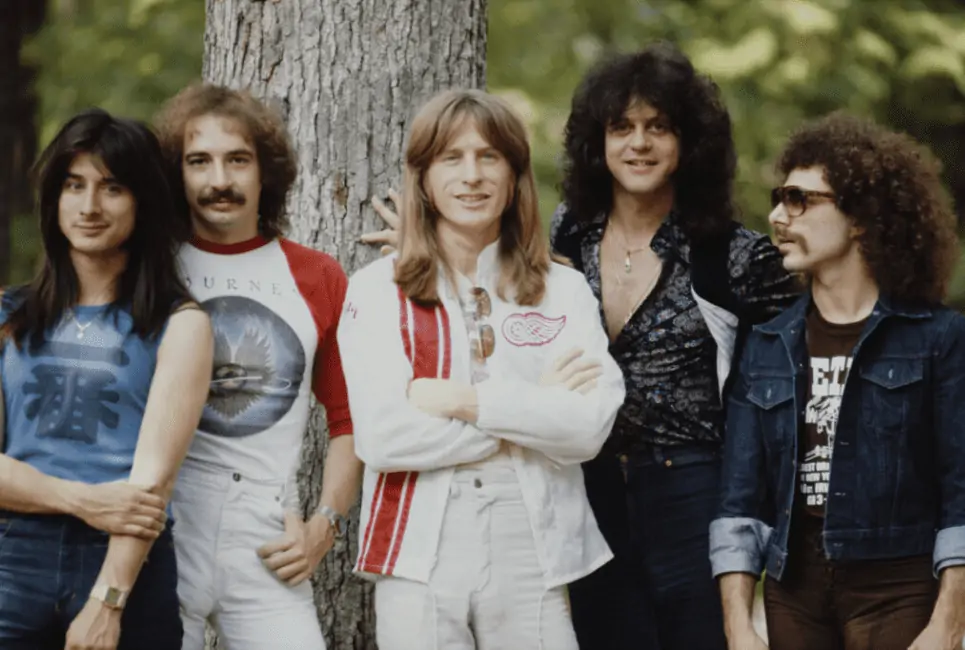
Journey Band History
- Latest Posts
- 10 Best 80s Rock Trios – When Rock Became ‘Modern’ - March 26, 2024
- 10 Best 90s Rock Trios – The Last Great Rock Trios - January 25, 2024
- Best Blues Power Trios of All Time - January 12, 2024
Journey Quick Facts Up Front
Gregg rolie, steve perry, jonathan cain, steve smith, ross valory, journey (1975); look into the future(1976); next (1977), infinity (1970), evolution (1979); departure (1980), dream, after dream (1980), escape (1981), raised in radio (1986), trail by fire (1996), arrivals (2000), revelation (2008), freedom (2022).
- Early Days Journey in their Fusion Days: Journey - Full Concert - 03/30/74 - Winterland (OFFICIAL)
- Arguably the Best Group Lineup Performing During the Escape Tour: Journey - Don’t Stop Believin’ (from Live in Houston 1981: The Escape Tour)
- A Recent Performance with Schon at the Helm. Pineda’s Vocal Performance is Stunning: Journey Live @ Lollapalooza Chicago 2021
The Journey Lawsuit & Replacements
Did journey sell out.
The glorious days of arena rock would not be as memorable without Journey. There could not be a better name for a band that went through many changes, successes, and failures and almost single-handedly rose the power ballad to the charts.
Journey’s band history is the epitome of 80s rock and the clashes between some of the most extraordinary rock musicians of the time.
Like all Journey fans, the first songs I heard were Steve Perry’s lead emotional ballads. He was the perfect singer for the ideal backing band. Yet, listening years later as a musician, I understood that it was not Steve Perry’s or Neal Schon’s Journey; the group’s creative chemistry made it all happen. Apart from the most commercially relevant period, Journey was and still stands strong. This bio might introduce you to some aspects and periods of the band that are now almost forgotten.
Journey Members You Should Know
The lineup changes are crucial to Journey’s band history. Nowadays, with only Neil Schon left as a founding member, we need to go back to the early days to understand who wrote and played the songs that made them famous.
All lineups were made up of the top rock musicians of each era. Not all, though, contribute as much as others.
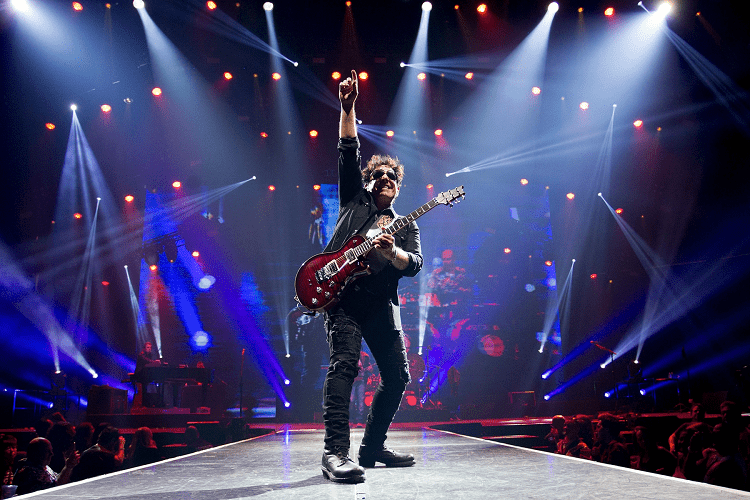
Neil George Joseph Schon (born February 27, 1954, in Oklahoma) is the band’s guitar player, founding member, and occasional songwriter.
Born in a musical family, Schon soon became a child prodigy after starting playing guitar at ten and being recruited by Santana at age 17. By the time he started Journey, he had experience playing in one of the best bands in the world and was fluent in jazz, rock, and Latin music.
Neal Schon is one of the most melodic guitar players of all time. He essentially shifted my perspective of a rock solo to a musical piece that tells a story rather than a power shred, which he occasionally tastefully adds.
Schon was always the leader behind the scenes, taking a significant say in all the band’s important decisions and even personally firing and replacing members. As a solo artist, he released nine albums and founded the bands “Hardline” and “Bad English.”

Gregg Alan Rolie (born June 17, !947, in Washington) is a founding member and journey original keyboard player and vocalist. As a Santana band member, Rolie was already a senior musician by the time Schon joined. He arguably shared with Santana the same success as with Journey, singing and playing in some of their biggest hits.
He formed Journey in 1973 and co-wrote the band’s first six albums before being replaced by the pressure of Steve Perry’s musical choices.
Rolie was as essential as Schon in creating the “Journey Sound” with signature Hammond, piano sound, and a bed of synths that backed the band’s rock groove.
Rolie is one of the most prolific musicians ever, with a successful solo career after his time with the band. He founded with Journey’s ex-member “The Storm.” He was part of Ringo Star’s “All Starr Band.”
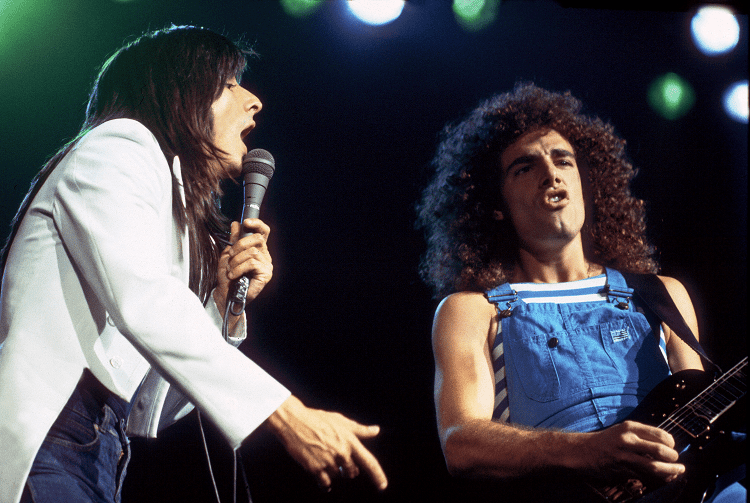
Steve Ray Perry (born January 22, 1949, in Hanford, California) was Journey’s lead singer, frontman, and main songwriter in their most successful years.
Perry’s exceptional vocal range and affinity for writing ballads and pop songs gave Journey what they needed to become the biggest arena rock band in the world. His musical beginning, though, was unsuccessful, with many failed attempts, sometimes even from misfortunes.
Manager Herbert picked up one of Perry’s demos while he had returned to working on his family’s farm and called him to perform with the band while Rober Fleischman was already hired as a singer. One song performed during soundcheck with the band sealed his place as frontman.
Perry undoubtedly came at the right time in the right band to change it all for Journey. The mental cost of fame and several misfortunes, the last a degenerative bone disease, forced him out of the band.
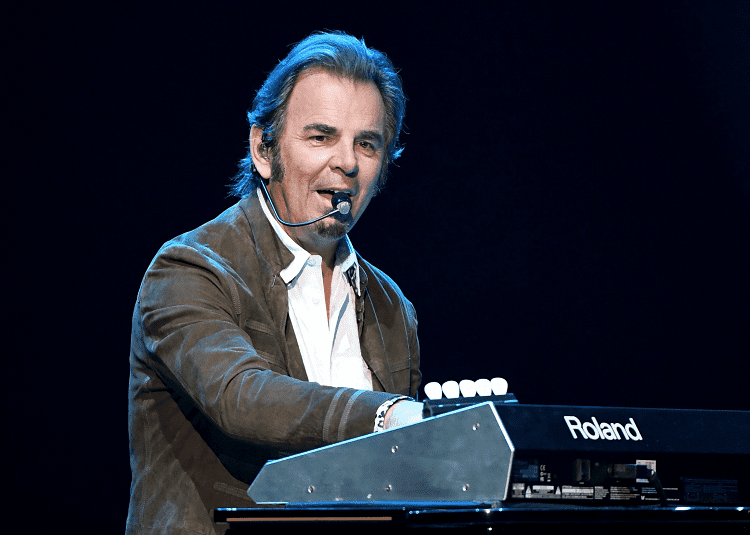
Jonathan Leonard Friga (born February 2, 1950, in Chicago, Illinois) was Journey’s most prolific keyboard player, coming in to replace Rolie and helping write the band’s most successful material.
Cain is a multi-instrumentalist who made a name for himself with the band “The Babys.” which opened for Journey. His ability to write with Perry was what convinced the singer to replace the already prolific Rolie.
Cain turned the already well-tuned Journey rhythm section into a hit-power ballad maker. Unlike Rolie, Cain’s signature is more straightforward melodic piano intros that laid the bed for tunes such as “In My Arms” or “Don’t Stop Believing.”
He was part of “Bad English” and recently started publishing Christian Rock records while serving as a Worship leader with his wife.
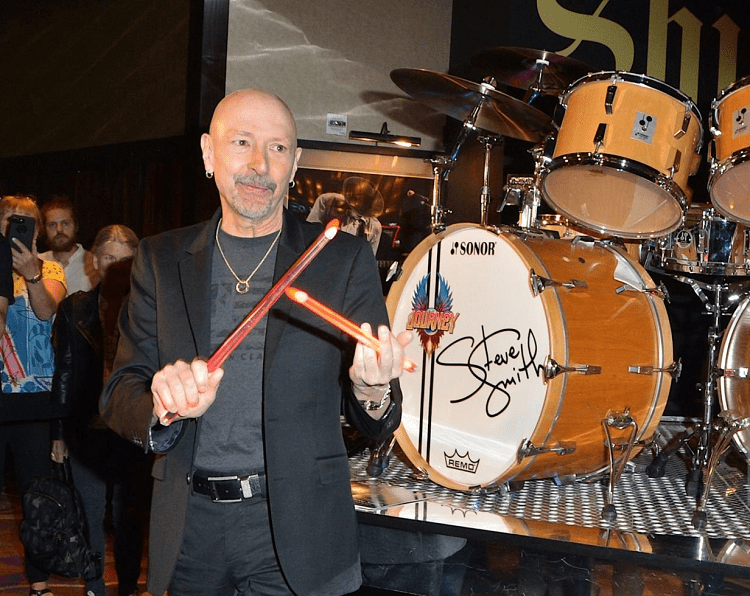
Steve Bruce Smith (born August 21, 1954, in Whitman, Massachusetts) was Journey’s drummer through their most prolific years and is widely considered one of the best musicians to ever sit behind a kit.
Smith is one of the most recorded drummers in history, having played sessions for virtually every top charting artist. He was voted five times in a row No.1 All-around Drummer from Modern Drummer magazine and inducted into the Modern Drummer Hall of Fame.
The session legend was part of three different Journey Lineups, part of Journey member’s spin-off group “The Storm,” and led his jazz-fusion groups.
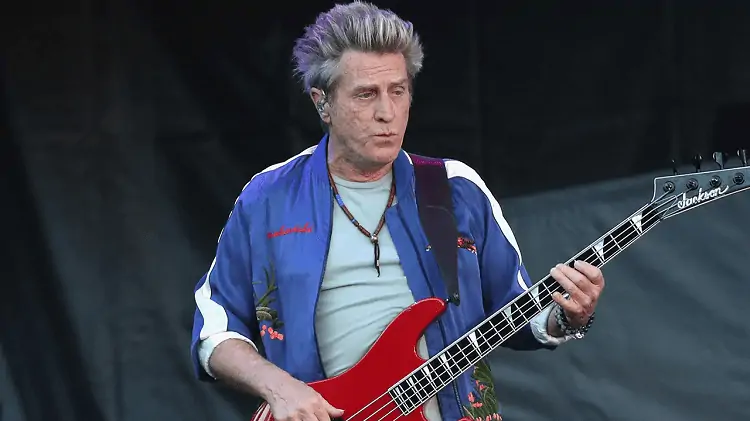
Ross Lamont Valory (born February 2, 1949, in San Francisco) is a founding member of Journey and the bass player in two different lineups.
Like the other founding members, Valory played with a legendary group before forming Journey. He was part of Frumious Bandersnatch and later Steve Miller Band. He holds a special place in Journey’s history, playing in all but one studio record. Even when he was not part of the band, he was hired to write and record bass tracks.
Valory is a master bass player who uses his variation of a “Nashville Tuning,” Where the 4-string bass is tuned to B-E-A-D. He continued his career in the 90s with “The Storm,” like most original Journey members.
Journey started as the most accidental Supergroup ever in a time when the notion was still new. Ex-member of Santana and Steve Miller members got together to form their prog rock, jazz fusion band called “The Golden Gate Rhythm Section.”
The mastermind behind much of Journey’s career was their manager Herbier Herbert who previously managed Santana.
The band would perform as a backing band for Bay Area artists, with Schon and George Tickner on guitar, Rolie on Keyboards and vocals, Valory on bass, and Prairie Prince on drums. The latter would be replaced by Aynsley Dunbar around the same time Tickner quit.
The early “Journey” never achieved commercial success, mostly due to their previous musically complex influences and the lack of a strong frontman. Roli was an excellent keyboard player and vocalist, but his old-style appeal was not what the band needed to relate to young audiences.
As a band, Journey has evolved and changed more than most. It sounds like a different band from the 1st to their 14th studio album. I’ll detail most of their stunning discography according to their impact on the band and rock music.
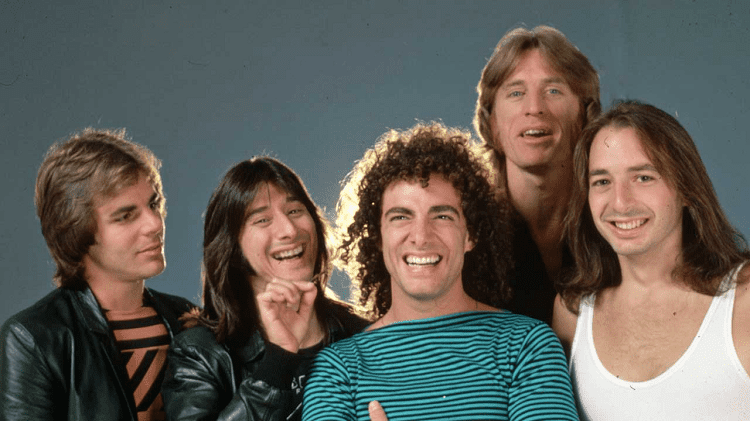
The first 3 Journey albums are a musical treat for every sophisticated rock lover. The complex compositions, delicate songwriting, and individual chops of members are three key elements that made them. There are no weak songs in any of them, yet there are not many memorable ones.
The Debut album is the ex-Santana and Steve Miller Band members having fun. The prog style might be their favorite thing to do, but as prog rock was slowly going off the charts, rock audiences needed something else.
From the first to the third album, the experimentation leaves off more place for catchy tracks. With Roli at the creative front and Herbert at the back, the band seemed to tone down their fusion influences to achieve success finally.
Commercially none of the albums did exceptionally well, and most of the band’s time was spent touring and trying to promote them.
As a guitar player and prog rock freak, I love early Journey sometimes more than the Steve Perry one. I find Neal Schon’s best guitar performances when some glimpses of jazz fusion are put in the mix.
Not to say that his later solos were less iconic, but later I found he would mainly “serve the songs” while the guitars made the song on the early Records. The same can be said about every lead instrument.
Depending on your background and taste, you could either love this version of Journey or, like many new fans, skip the three albums entirely. If you belong to the second group, I will encourage you to listen to the first song from the Debut Album, “Of a lifetime, “and you might change your mind.
The Much Needed Lead Singer
The musical chemistry, management, and inspiration were there for Journey, but their image and performances lacked the strong crowd-pleasing frontman. Behind the Keyboards, singing lead vocals, Roli did his part musically, but not stylistically.
The band’s first singer, hired with Herber’s suggestion, was glam rocker Robert Fleischman. With a high register and great stage presence, Fleischman toured successfully with Journey in 1977 until Steve Perry replaced him after he sang one in soundcheck with the band on the same tour.
Perry not only performed flawlessly exciting songs but managed to bond immediately with Neil Schon in writing their first songs together. The band changed direction and with that also their drummer. Session ace Smith replaced Dunbar, who was unhappy with the new pop direction of the band.
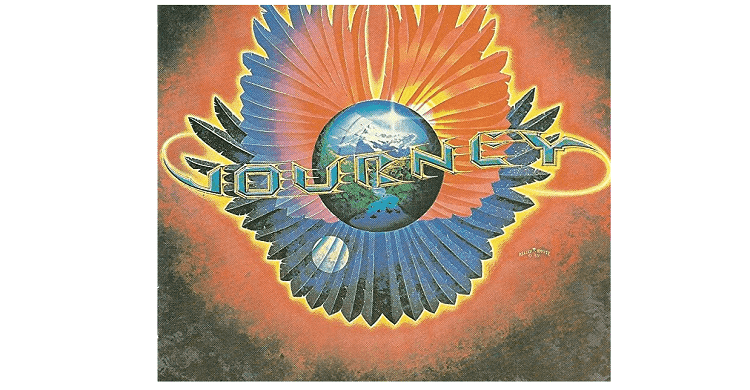
The first album with Perry as lead vocalist launched the band to commercial success reaching No. 21 on Billboard. “Infinity” marks the band’s change in musical direction, with Queen’s producer Roy Thomas Baker directing the shift.
The album is strong in every aspect. The songwriting, production, intent, and musicianship are top-notch. It combines the band’s collected materials and Perry’s melancholic songwriting over the years. His voice added character to the virtuoso band that needed it. My favorite song from the album is “Wheel in the Sky,” written by Fleischman and the band before Perry joined in. Perry’s voice, though, I think, does it more justice.
It starts with Neil Schon’s classically influenced guitar part and develops to a hard rock tone with a country riff. The mixture of different genres is, I think, what makes all individuals of the band shine.
The two songs that better defined the band’s musical direction were the power ballads “Lights” and “Patiently.” Slow-tempo emotional tracks with a solid vocal melody that builds up to guitar solos and live encores. Both tracks are now legendary and staples of the band’s live shows.
The following two Journey studio albums saw the band’s rise to fame, each doing better than the previous. They were headlining tours and festivals and having crowds resonate massively with their songs for the first time.
Both albums continued where “Infinity” left off, merging Perry’s now-proven hit songwriting skills with the band’s musicianship. The new frontman was now contributing to all the songs and indirectly dictating the band’s sound. Not all songs are great, though; most lack memorable hooks and fade compared to the hits.
My favorite of the two albums is “Departure.” There’s a spice more of prog rock in that album which I think brings out the best of the band. After all, the band was not originally an Arena rock act.
“Any way you want” and “Loving’, Touchin’, Squeezin;” are widely known tracks. My favorites are the less popular “Do You Recall” and “I’m Cryin,” which Perry and Rolie co-wrote.
The next record was a musical spin-off as a soundtrack album. Beyond all expectations, the band produced the most musically intricate prog rock album of their career.
It’s arguably the most polarising album of Journey’s catalog, yet one the band truly enjoyed making. The all-star band of virtuoso musicians couldn’t wait to stretch the musical muscles once again as in the old days. The result is fantastic prog rock, yet not one you would most likely hear on the radio.
I adore the compositions and musicianship on all the songs, especially the 8-minute opening track “Destiny.” In true prog fashion, extended instrumentation and solos weren’t missing.
It’s not an album for everyone, but those who like it, love it.
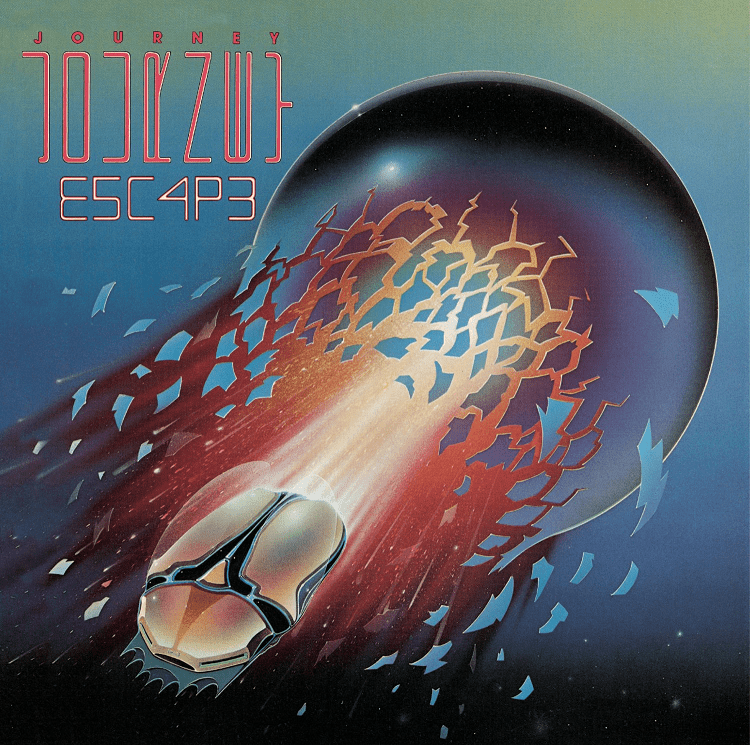
Rolie leaving the band in favor of Jonathan Cain might have consisted of one of the best musicians on earth, but it gave them the best-selling album of their career . The album almost single-handedly created the 80s sound.
The album starts with the band’s epic rock anthem, “Don’t Stop Believin’.” The song was started by Perry and Schon and later finished by Cain, who added the piano hook and hook. As Cain relieves in an interview, those were the three words his dad told him when he wanted to quit music.
The song is today the best-selling catalog track of the digital era. It’s now beyond a rock anthem to a pop culture hit. Journey’s “Free Bird” in a sense.
Cain brought in the catchy hooks and memorable piano parts and perfectly completed Perry’s ideas. The ballad “Open Arms” they wrote together differed from previous ones. It was more delicate, straightforward, catchy, and singable. After some struggles in getting it through Schoun skeptical reception of the song, it became a fan favorite.
Journey – Open Arms (Official Video – 1982)
The song that moves me the most is “Mother, Father.” Perry recorded the vocals in one mesmerizing take. What’s more impressive is that it is probably the hardest Journey song to sing.
“Espace” paved the way for the next charting album in 1983, “Frontiers.” It produced hit songs and anthems and delivered on the success of the previous albums.
Success and Downfall
Journey waited three years to release an album for the first time in their career. The continuous touring and fame were starting to kick back. Schon and Perry had also released their solo records capitalizing on Journey’s Success.
Perry, at this time, dominated the band’s musical direction completely. According to him, only Schon and Cain were suited for the band as he fired Roos Valory and, slightly later, Steve Smith. As he declared in an interview, he thought it was the best decision at the time, but he regrets doing it.
His mental health was also deteriorating as the rise to fame alienated him from the rest of the world.
Replacing both members with session musicians gave the trio more control over the songs. Perry himself took up the role of producer for the album. “Raised In Radio” is a successful attempt to top the charts through their hit song formula, but the lack of team effort is felt.
I think the album is too poppy and sacrifices the musical input of Valory and Smith for attempted hooks. There are undoubtedly hit songs such as “Girl, I Can’t Help It” and “Be Good To Yourself,” yet it’s not an album I can enjoy listening to back to back like the rest.
Commercially it did well, as expected. The band knew how to write hit songs and what the audience wanted by this time. Listening to it now, It feels like Perry’s rushed attempt to stay on top of the game and even outdo himself.
Disbandment and Attempted Comeback
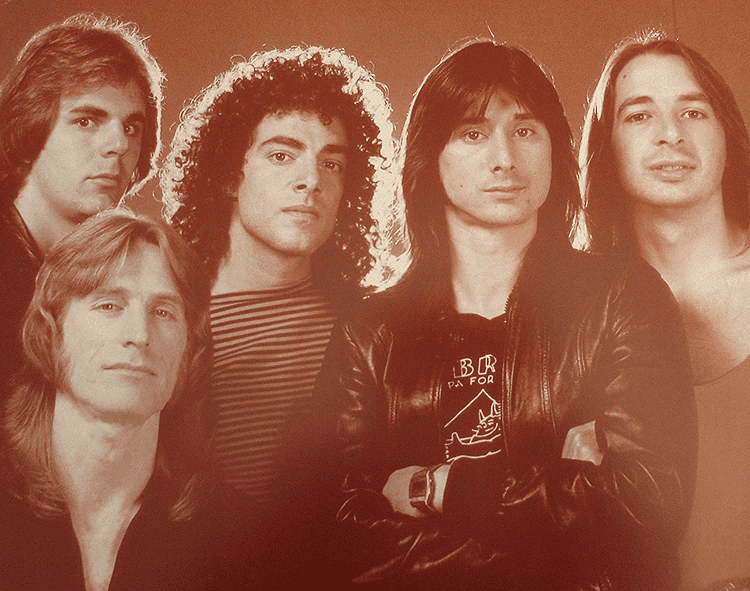
The problems with Perry’s control over the band and continuous isolated life lead to him wanting to stop everything. After his last show with the band in February 1987, he left the band and stopped Journey for almost ten years.
Perry never released an official statement, and some still wonder if the animosity between members was the main cause of his leaving. The fact that he released music after leaving the band makes me think he still wanted to make music on his own, in less frantic terms.
One thing is for sure; Journey couldn’t keep up their successful streak without Perry, so each went separate ways.
In 1995 the band reunited again at Perry’s request to fire current manager Herbert for the well-known Irving Azoff, which staged the Eagles’ comeback some years prior.
Journey was back, and a long-awaited successful album came shortly after. All members had amassed material during the years, so a musically rich album was bound to come.
“Trial by Fire” is my favorite Journey album after “Escape,” as it delivers the quality you’d expect from a great comeback. The hit song “When You Love a Woman” was surely meant to be a hit, but it’s not formulaic in any way.
Valory and Smith back on the band brought back the original backbone of the group. Putting this album back to back with its predecessor, you will notice the difference the rhythm section had in Journey after a few tracks. It gives character to songs having individual doing their thing and not hired guns.
I wish it had some more elements of hard rock, but that might be just the nostalgia from the days of “Don’t Stop Believin’.”
This album is the last Perry contribution as he was diagnosed unexpectedly with a bone condition and was unwilling to undergo surgery to continue touring.
Modern Journey
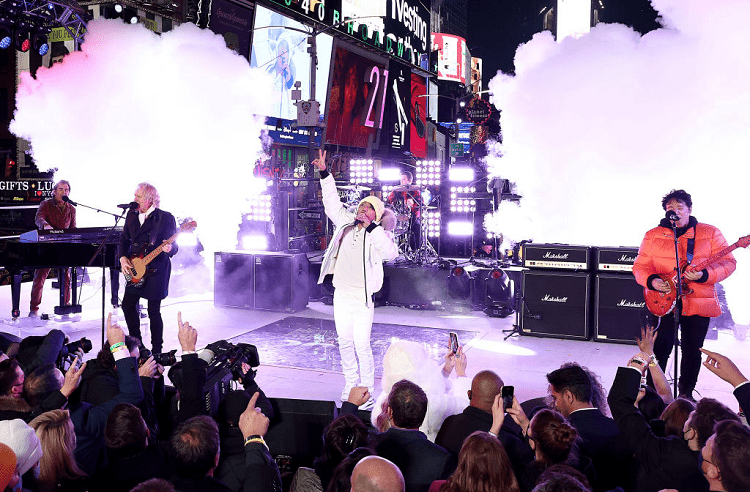
Journey is still touring and releasing albums today, with only Schon remaining an original band member. He calls the shots about the music direction and often replaces members.
After Perry distanced himself from music, the band moved on and recruited Steve Augeri as frontman, with drummer Deen Castronovo as occasional lead vocalist. Augeri was the perfect vocalist for Journey, who needed the same high-pitched power Steve Perry had.
Of the two albums Journey released with Perry, the first one is the only one that somehow matched the previous albums’ quality. It’s not the band’s most creative work, yet it’s an album with the pure Journey sound almost intact.
The album is instrumentally great but lacks strong songwriting. Augeri contributed to some songs, yet his role as the newcomer was to sing, according to Schon and Cain’s writing.
The song “World Gone Wild” is my favorite of the whole album, showing off Augeri skills at best and some great guitar work by Schon.
Commercially it did well, considering that arena rock was not the most popular genre of the early 2000s. I think that part of the merit goes to the fans’ curiosity and joy of having another Journey album.
The next album with Augeri, “Generations,” was the band’s least successful record after having him fired.
Ariel Pineda replaced Augeri in a dream story of Schon recruiting him after watching his Journey Covers on YouTube. The album was the band’s last big commercial success, even though the era of rock bands topping the charts was gone.
In true Journey style, Cain delivers a hit power ballad. “After All These Years” is just as good as any of the band’s legendary ballads and is only penalized by the rise of pop and dance music. I love how the band switched to a hard rock style for this record, flexing some fast-paced tempo grooves after a while.
Pineda seemed to be a bigger creative force than Augeri and an equally experienced live frontman. The live shows with the classic hits were and still are the band’s main focus, accumulating ridiculous amounts from the tour.
Having survived a pandemic, lawsuit, and personnel changes, Journey released their new record in more than a decade. Years of accumulated creativity resulted in an arena rock juggernaut.
Cain and Schon were in charge of the production, while drummer Narada, a prolific songwriter and singer, helped write and co-produce much of the material. It starts with the power ballad “Together We Run” and the expected melodic Cain piano intro.
Listening to album after ten other Journey pop-rock records can be too much if you’re not a die-hard fan. I would have preferred a more Prog rock Journey record as that always brings new sounds.
Notable Performances
Early days journey in their fusion days: journey – full concert – 03/30/74 – winterland (official) .
Arguably the Best Group Lineup Performing During the Escape Tour: Journey – Don’t Stop Believin’ (from Live in Houston 1981: The Escape Tour)
A Recent Performance with Schon at the Helm. Pineda’s Vocal Performance is Stunning: Journey Live @ Lollapalooza Chicago 2021
Changes in band members always come with legal issues when rights to songs are on the table. In the 80s, they maintained a good balance between members. Primarily due to solid management from Herbert, things were kept quiet.
Valory and Smith were fired from the band in 2019 after attempting to own one of the band’s corporate entities. According to the two, Perry gave them the right to hold that part of the business. Schon and Cain considered this an attempt to squeeze more money even when they were not playing.
Journey did write beautiful songs, yet the term’ corporate rock’ started to haunt them as each charting album chased the next big thing. The bad reputation arena rock gets from rock fans sometimes comes from the many attempts to write hits and please the crowd.
My stand as a rock fan with a taste from Beatles to modern metal is that Journey didn’t sell out in the sense of chasing money. Their style evolved, sometimes in search of a bigger fanbase, but still, they delivered nongeneric hits.
They developed a successful style that pushed them to recreate the success repeatedly. The members’ egos, management pressures, and fans’ high expectations had their parts.
Answer : One roadie, John Villanueva, suggested the name after failed attempts, including a radio contest involving the fans to find a proper name.
Answer : Journey had six lead singers in the band from the 70s to today.
Answer : Arena rock is considered any rock genre that can fill a stadium on a one-night event. In the mid-70s and 80s, it took a slightly different meaning, becoming a synonym for successful commercial rock bands who were best known for Power Ballads. Arena rock bands deliver great spectacles with massive crowds and often have predictable, straightforward music to resonate with as many people as possible.
- Journey (band) – Wikipedia
- Journey Documentary (Behind The Music)
- Don’t Stop Believin’: Everyman’s Journey HD
- Journey – Raised On Radio (1986 Tour Documentary)
- Journey Music
- Journey (band)
- Journey’s Neal Schon says he and Steve Perry are ‘in a good place’ before band’s 50th anniversary
- Journey Biography, Songs, & Albums | AllMusic
- Journey – The Brilliant Band Members, Stories & Struggles | Eagle 106.5
- Journey: Band Members and History
Looking for more interesting readings? Check out:
- The Police Band History
- AC/DC Band History
- R.E.M. Band History
Related Posts

The Beatles Band History
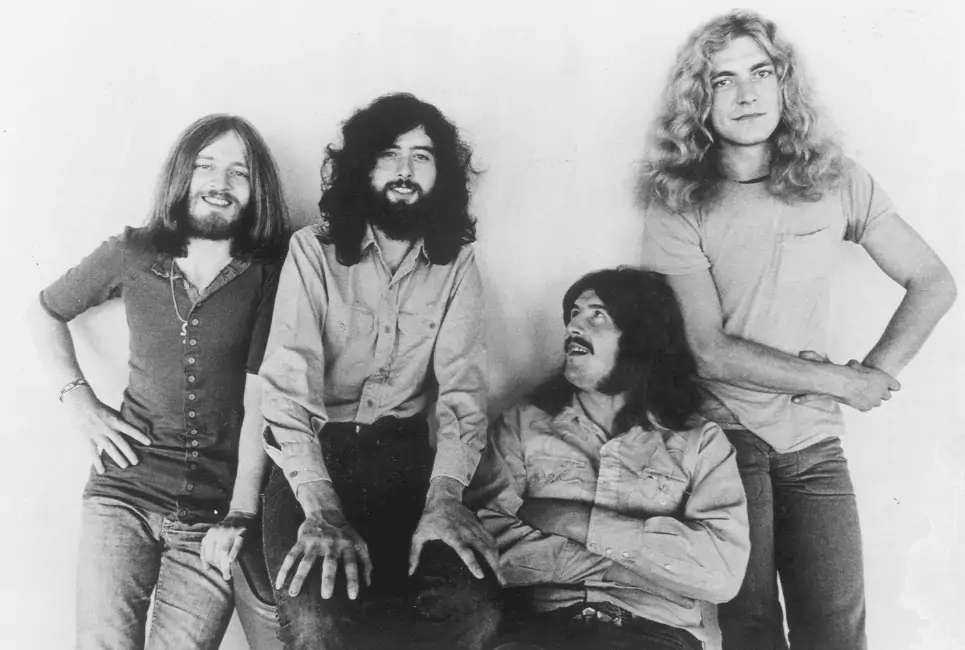
Led Zeppelin Band History
Leave a comment.
Your email address will not be published. Required fields are marked *
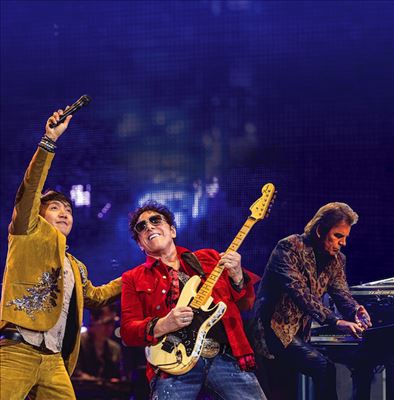
Anthemic arena rock outfit who achieved huge success in the 1970s and '80s thanks to musical prodigy Neal Schon and smooth tenor Steve Perry.
Read Full Biography
STREAM OR BUY:
Group Members
Album highlights.
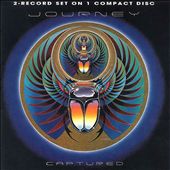
Related Artists
Discography, moods and themes, related articles.

Song Meanings and Facts
by Amanda London · Published April 12, 2021 · Updated April 12, 2021
San Francisco originated rock band, Journey is regarded as one of the best-selling rock bands in the history of rock and roll. Despite the successes the band has achieved over the years, it was quite the opposite in the beginning stages of their career.
The band experienced a number of challenges from their formation in 1973 until 1978 when they broke through with the release of several series of hit songs.

Just as their name suggests, Journey has encountered some bumps on the road to fame in the form of commercial failures, disbanding and reuniting, inconsistent line-ups among many others.
With their musical style varying between seven different genres- Album Rock, Arena Rock, Contemporary Pop, Progressive Rock, Soft Rock and Adult Contemporary, the unique sound of the American band has also been altered drastically.
As of 2020, the line-up consists of these able musicians:
- Neil George Joseph Schon (guitarist & songwriter)
- Ross Lamont Valory (bassist)
- Steve Bruce Smith (drummer)
- Jonathan Leonard Friga popularly as Jonathan Cain (Keyboardist)
- Arnel Campaner Pineda (Lead Singer)
- Randall Darius Jackson (bassist)
- Narada Michael Walden (drummer)
- Jason Derlatka, a temporary backup for the band
Interesting Facts about Journey
With over 80 million sold records worldwide, this group has climbed the ladder to become one of the most celebrated bands in the United States.
The group was nominated for a Grammy Award for Best Pop Performance by a Duo or Group with Vocal in 1996.
Their 1981 album Don’t Stop Believin became the top-selling track on iTunes Songs not released in the 21st Century. The same album took the No.3 spot on iTunes for the most downloads in 2005.
The albums, Escape and Frontiers , earned the No.1 spot on the Billboard’s 200 and No.6 spot on the UK Albums Chart respectively.
Journey is currently ranked the 96th Greatest Artist of All-Time by Video Hits One (VH1).
Seven of Journey’s current and past members were inducted into the Rock N’ Roll Hall of Fame in 2017 and received a Hollywood Walk of Fame star on January 21, 2005.
The current lead singer of the band, Arnel Pineda was discovered through a YouTube video of his performance with his former band, The Zoo. Journey’s guitarist Neal Schon, was convinced by the lead singer’s sound and recruited him.
Arnel Pineda assumed Journey’ s job offer to him was a prank so it took him six weeks before he accepted the job.
Former band member, Gregg Rolie quit the band in order to start his family.
Guitarist Neal Schon is the only band member to have never quit the band since its formation. He has played in all fourteen albums of the band to date.
Former lead singer of the band, Steve Perry remains the most loved vocalist of the band even after his departure.
Before becoming a lead vocalist for the group, Steve Perry sang in commercials.
The group’s bassist Randy Jackson (Randall Darius Jackson) became a judge on the famous United States talent show, American Idol .
Brief Conclusion
Journey has over the years grown to become one of America’s favorites. For the past 40 active years of this band’s career, they have proven that greatness can be re-lived over and over again even if it is done by a different set of people with the same goal.
As of this writing, the group has remained musically active and is preparing to release more albums and singles following its most previous release in February 2021.
Famous Songs by Journey
- “To Play Some Music”
- “On a Saturday Night”
- “She Makes Me (Feel Alright)”
- “Spaceman”
- “Wheel in the Sky”
- “Anytime”
- “Lights”
- “Just the Same Way”
- “Lovin’, Touchin’, Squeezin'”
- “City of the Angels”
- “Too Late”
- “Any Way You Want It”
- “Walks Like a Lady”
- “Good Morning Girl”
- “Stay Awhile”
- “The Party’s Over (Hopelessly in Love)”
- “Dixie Highway”
- “Who’s Crying Now”
- “Stone in Love”
- “ Don’t Stop Believin’ “
- “Open Arms”
- “Still They Ride”
- “Separate Ways (Worlds Apart)”
- “Faithfully”
- “After the Fall”
- “Send Her My Love”
- “Be Good to Yourself”
- “Suzanne”
- “Girl Can’t Help It”
- “Raised on Radio”
- “I’ll Be Alright Without You”
- “Why Can’t This Night Go on Forever”
- “Natural Thing”
- “When You Love a Woman”
- “Message of Love”
- “Can’t Tame the Lion”
- “If He Should Break Your Heart”
- “Higher Place”
- “All the Way”
- “With Your Love”
- “The Place in Your Heart”
- “After All These Years”
- “Never Walk Away”
- “Where Did I Lose Your Love”
- “Anything Is Possible”
- “City of Hope”
- “Human Feel”
Related posts:
Journey’s “don’t stop believin’” lyrics meaning, “keep on runnin'” by journey, “send her my love” by journey.
- “Separate Ways (Worlds Apart)” by Journey
- “Who’s Crying Now” by Journey
- “Never Walk Away” by Journey
- “Foolish Heart” by Steve Perry
- “Zoot Suit Riot” by Cherry Poppin’ Daddies
Leave a Reply Cancel reply
Your email address will not be published. Required fields are marked *
Name (Optional)
Tags: Journey Steve Perry
You may also like...
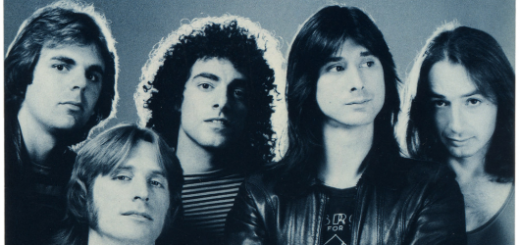
August 4, 2019
by SMF · Published August 4, 2019 · Last modified September 21, 2022
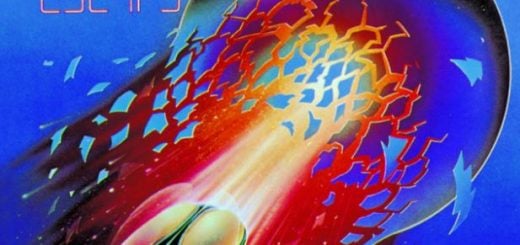
January 4, 2022
by Amanda London · Published January 4, 2022
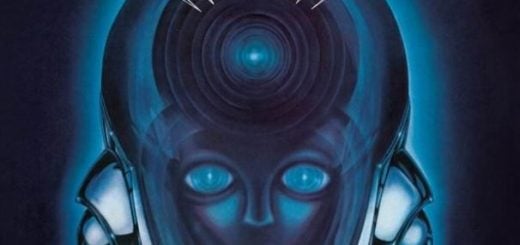
April 18, 2022
by Amanda London · Published April 18, 2022

Song Meanings & Facts
- Terms and Conditions
Journey: Band Members and History
Olaf Herschbach / Getty Images
- Top Artists
- Holiday Music
- Alternative Music
- Classical Music
- Country Music
- Rap & Hip Hop
- Rhythm & Blues
- World Music
- Heavy Metal
- Latin Music
For over 40 years, Journey has been one of the greatest classic rock bands of all time. The band has released 23 albums and 43 singles since 1975 and has reached worldwide album sales totaling more than 75 million.
But how exactly did Journey come to be? The San Francisco band got its start in 1973. Santana's former road manager, Herbie Herbert, recruited two of that band's members (Gregg Rolie and Neal Schon) and former Steve Miller Band bassist Ross Valory to form the Golden Gate Rhythm Section—the band that later became Journey.
The original Journey band members included Gregg Rolie on vocals and the keyboard, Neal Schon on guitar and vocals, George Tickner on guitar, Ross Valory on bass and vocals, and Prairie Prince on drums.
Their first album was released in 1975 and established the band's jazz-influenced progressive rock sound. After several personnel changes, Steve Perry signed on as lead vocalist, launching the band's greatest period of commercial success from the late 1970s through the mid-1980s. Many people remember Steve as the face of the band.
The Best Album
The group's seventh album, Escape, produced three hit singles and sold over 9 million copies. In addition to its commercial success, the album also received critical acclaim that has eluded them through most of their existence. Arguably, the most popular song put out by Journey is "Don't Stop Believin'." Originally released in 1981, the song became a Top 10 hit on the Billboard Hot 100, debuting at No. 9. The song has been used in near countless films in American TV and cinema including Monster, Glee , the season finale of The Sopranos , and Rock of Ages.
Journey Band Members Over the Years
In 2005, the band (along with original members Schon and Valory) marked its 30th anniversary with the release of its 23rd album, Generations and an anniversary tour, at times featuring some of the many former members of the group. In December 2006, Jeff Scott Soto replaced Steve Augeri as lead vocalist. Soto had been filling in for several months after Augeri was sidelined with a chronic throat infection. Soto was replaced a few months later by Arnel Pineda , vocalist for a Filipino cover band who was hired as a result of a video he posted on YouTube.
The band has been on a journey as it has evolved from past members including Steve Perry to its current members.
Past Journey band members include the following:
- Steve Perry (1977-1998)
- Aynsley Dunbar (1974-1978)
- Robert Fleischman (1977)
- Steve Smith (1978-1985, 1995-1998)
- Randy Jackson (1985-1987)
- Steve Augeri (1998-2006)
Current Journey band members:
- Neal Schon - guitar (1973-present)
- Jonathan Cain - keyboards (1980-present)
- Ross Valory - bass (1973-1985, 1995-present)
- Arnel Pineda - vocals (2007-present)
- Deen Castronovo - drums (1998-present)
Fun Facts About Journey
- Journey music has been part of the animated TV shows South Park and Family Guy, and movies Caddyshack and BASEketball.
- The group received a star on the Hollywood Walk of Fame in 2005 and was inducted into the San Francisco Music Hall of Fame in 2003.
- Bands of San Francisco
- Top 30 Boy Bands of All Time
- The Top 40 Pop Artists of All Time
- Ten Greatest R&B Bands of All-Time
- Where Are the Woodstock Performers Now?
- Top 10 LGBT Singers of All Time
- 100 of the Best Pop Songs of All Time
- Pink Floyd Timeline and Milestones
- The Top 100 Christmas Songs
- A History of The Rolling Stones
- The Top 100 Love Songs of All Time
- Top '80s Songs of American Arena Rock Band Journey
- The Top 100 Best Party Songs of All Time
- Top 50 Sexy Pop Songs
- Pop Musicians Who Died in the 2000s
- 30 Greatest Male R&B Artists of All-Time

Rock Music World
Biggest Music Community

Journey Lead Singers In Order: History and Band Members
In this article, we delve into the captivating history of Journey, an iconic rock band that has left an indelible mark on the music industry. From their humble beginnings to their meteoric rise to fame, Journey has mesmerized audiences worldwide with their unique sound and timeless hits. Join us on a journey through time as we explore the remarkable story of this legendary band.
Formation of the Band
Journey was formed in 1973 in San Francisco, California, bringing together a group of highly talented musicians. The founding members included Neal Schon, Gregg Rolie, Ross Valory, Aynsley Dunbar, and George Tickner. With their combined musical prowess and creative vision, they set out to create something extraordinary.
Early Years and Musical Style
During their early years, Journey experimented with a fusion of rock, jazz, and progressive influences, creating a distinctive sound that set them apart from their contemporaries. Their self-titled debut album, released in 1975, showcased their musical versatility and marked the beginning of their incredible journey.
Evolution and Breakthrough Success
In 1977, Journey underwent a significant change that would forever shape its destiny. Steve Perry joined the band as their lead vocalist, injecting new energy and unparalleled vocal range into their music. This lineup change proved to be a turning point for Journey, leading to a series of chart-topping albums and unforgettable songs.
Chart-topping albums and Hit Singles
Journey’s breakthrough came in 1978 with the release of their album “Infinity,” which became a massive success. The album spawned the hit singles “Wheel in the Sky” and “Lights,” propelling Journey into the mainstream spotlight. They continued their winning streak with subsequent albums, including “Evolution” (1979) and “Departure” (1980), which produced hits like “Lovin’, Touchin’, Squeezin'” and “Any Way You Want It.”
The Iconic Album: “Escape”
In 1981, Journey released their most iconic album to date, “Escape.” This album elevated their status as rock superstars and solidified their place in music history. Featuring the mega-hits “Don’t Stop Believin’,” “Open Arms,” and “Who’s Crying Now,” “Escape” became an instant classic, captivating audiences with its emotionally charged lyrics and powerful melodies.
The Power Ballad Era
Journey’s success continued into the mid-1980s, defined by the rise of power ballads that struck a chord with fans worldwide. Songs like “Faithfully,” “Separate Ways (Worlds Apart),” and “Send Her My Love” showcased the band’s ability to create heartfelt and anthemic ballads that resonated deeply with listeners.
A Change in Direction
As the 1990s approached, Journey faced challenges and underwent significant lineup changes. Steve Perry departed from the band in 1987, leading to a period of transition as they searched for a new lead vocalist. Despite these challenges, Journey remained resilient and continued to produce music that captivated its loyal fan base.
Journey’s Enduring Legacy
Although the band’s popularity waned in the late 1990s, their music never faded from the hearts of their dedicated fans. Journey’s timeless classics continue to resonate with audiences of all ages, thanks to their emotional depth, infectious melodies, and inspiring lyrics. Their songs have become anthems for perseverance, love, and the power of music itself.
Past Journey band members include the following:
- Steve Perry (1977-1998)
- Aynsley Dunbar (1974-1978)
- Robert Fleischman (1977)
- Steve Smith (1978-1985, 1995-1998)
- Randy Jackson (1985-1987)
- Steve Augeri (1998-2006)
Current Journey band members:
- Neal Schon – Guitar (1973-present)
- Jonathan Cain – Keyboards (1980-present)
- Ross Valory – Bass (1973-1985, 1995-present)
- Arnel Pineda – Vocals (2007-present)
- Deen Castronovo – Drums (1998-present)
Lead Singers of Journey
Van Halen Lead Singers In Order: A Journey Through the Years
Black Sabbath Singers In Order: Ever-Changing Lineup of Black Sabbath
The Original Journey: Gregg Rolie’s Era

Gregg Rolie, a two-time Rock and Roll Hall of Fame inductee, served as the original lead singer of Journey. He began his musical career as a co-founder and lead vocalist of Santana before joining forces with Neal Schon to form Journey. Rolie’s soulful voice and exceptional skills as a keyboardist and harmonicist contributed to the band’s early success. He showcased his talent on albums like “Journey,” “Look into the Future,” and “Next.” However, Rolie transitioned to co-lead vocals when Steve Perry joined the band in 1977.
Steve Perry: The Voice of Journey’s Greatest Hits
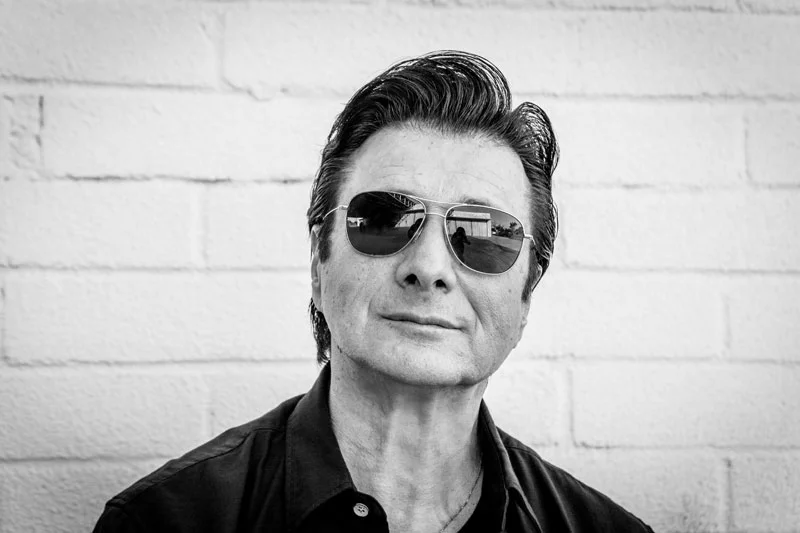
Steve Perry, widely recognized as the quintessential Journey lead singer, propelled the band to unprecedented heights during their most commercially successful era. Born with a gift for singing, Perry’s powerful and emotive vocals struck a chord with audiences worldwide. With Perry at the helm, Journey released a string of chart-topping albums, including “Infinity,” “Escape,” and “Frontiers.” Iconic songs like “Don’t Stop Believin’,” “Open Arms,” and “Faithfully” became anthems for a generation. Perry’s remarkable songwriting abilities and magnetic stage presence contributed to the band’s enduring legacy.
Current Lead Singer: Arnel Pineda

Following Steve Perry’s departure in 1987, Journey experienced a series of lead singer changes. Steve Augeri, known for his vocal range and stage charisma, took over from 1998 to 2006. Jeff Scott Soto briefly joined the band in 2006, leaving his mark with his distinctive style. However, it was Arnel Pineda who breathed new life into Journey as the current lead singer. Pineda’s incredible vocal resemblance to Steve Perry, coupled with his dynamic stage presence, won the hearts of fans worldwide. Since 2008, Pineda has seamlessly integrated into the band, injecting fresh energy and passion into their performances.
Journey’s Enduring Discography: Albums That Defined an Era
Over the past five decades, Journey has released a diverse and extensive discography, showcasing their musical prowess and creativity. Let’s explore some of their most iconic albums:
“ Infinity ” (1978): With Steve Perry as the lead singer, “Infinity” marked a significant turning point for Journey. It featured hit singles like “Wheel in the Sky” and “Lights,” solidifying their place in the rock music landscape.
“ Escape ” (1981): This album became a monumental success, boasting chart-topping hits such as “Don’t Stop Believin'” and “Open Arms.” “Escape” catapulted Journey to international stardom and remains one of their most beloved records.
“ Frontiers ” (1983): Building upon their previous success, “Frontiers” showcased Journey’s evolution with tracks like “Separate Ways (Worlds Apart)” and “Faithfully.” The album’s polished production and memorable hooks solidified Journey’s status as one of the biggest rock bands of the 1980s.
“ Raised on Radio ” (1986): Released during the band’s final years with Steve Perry, “Raised on Radio” featured a more radio-friendly sound and produced hits like “Be Good to Yourself” and “I’ll Be Alright Without You.” Despite tensions within the band, the album showcased their ability to create catchy, melodic rock tunes.
“ Revelation ” (2008): With Arnel Pineda as the lead singer, “Revelation” marked a new chapter for Journey. The album featured new recordings of their classic hits, reaffirming Pineda’s vocal prowess and rekindling the band’s popularity among longtime fans and a new generation.
“ Eclipse ” (2011): Continuing their musical journey with Pineda, Journey released “Eclipse,” a record that showcased their ability to evolve while staying true to their roots. The album demonstrated their enduring songwriting skills and featured tracks like “City of Hope” and “Edge of the Moment.”
“Escape & Frontiers Live in Japan” (2019): As a testament to their enduring appeal, Journey released a live album featuring their performances of the “Escape” and “Frontiers” albums in their entirety. The release showcased the band’s timeless hits in a live setting, capturing the energy and excitement of their concerts.

Journey’s Impact and Legacy
Journey’s impact on the rock music landscape cannot be overstated. With their infectious melodies, anthemic choruses, and powerful vocals, they carved out a unique sound that resonated with millions of listeners. Their music transcended generations, becoming the soundtrack to countless moments and capturing the hearts of fans worldwide.
Steve Perry’s tenure as the lead singer marked the band’s most successful period, and his distinct voice became synonymous with Journey’s sound. His emotional delivery and ability to connect with audiences elevated their songs to new heights and created an unparalleled legacy.
Arnel Pineda’s addition to the band injected new energy into Journey and allowed them to continue their musical journey. Pineda’s remarkable vocal resemblance to Perry breathed new life into the band’s live performances, earning him a dedicated fanbase and ensuring that Journey’s music lives on.
Journey’s timeless hits continue to be celebrated and embraced today. Songs like “Don’t Stop Believin'” have become cultural touchstones, appearing in films, TV shows, and sporting events, and capturing the imaginations of new generations of listeners.
Journey Band Member’s Ages
Here, is the list of all the Journey member’s ages. It seems like all of the Journey band members are above 50 and below 80.
Recommended Posts
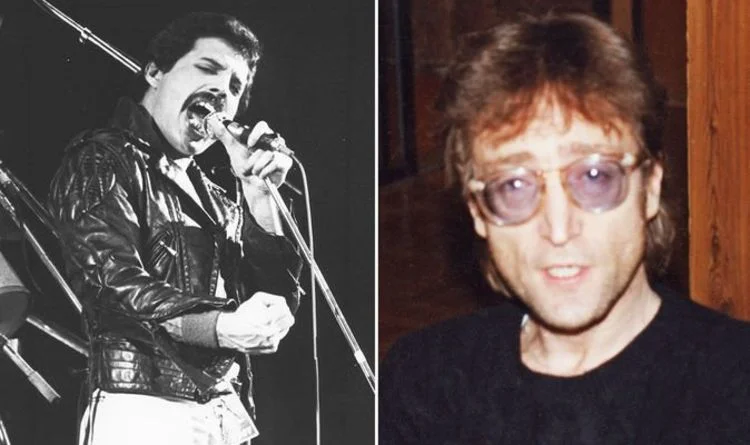
John Lennon’s opinion on Queen
John Lennon was the oldest founding member of The Beatles and was born in Liverpool, England, much like all the other members of the band. He was only 29 years old when the band broke up in 1970, and the music industry had seen rapid turmoil during that decade with the emergence of numerous new […]
Rush’s Geddy Lee gives his opinion on Led Zeppelin
In an interview with Classic Rock magazine, Geddy Lee, the bassist, singer, and occasionally pianist for Rush, shared his thoughts on Led Zeppelin. The Canadian guitarist discussed the band’s sound and offered commentary on their iconic album “Led Zeppelin IV.” Rush’s Geddy Lee gives his opinion on Led Zeppelin: Geddy said, “I had the pleasure […]
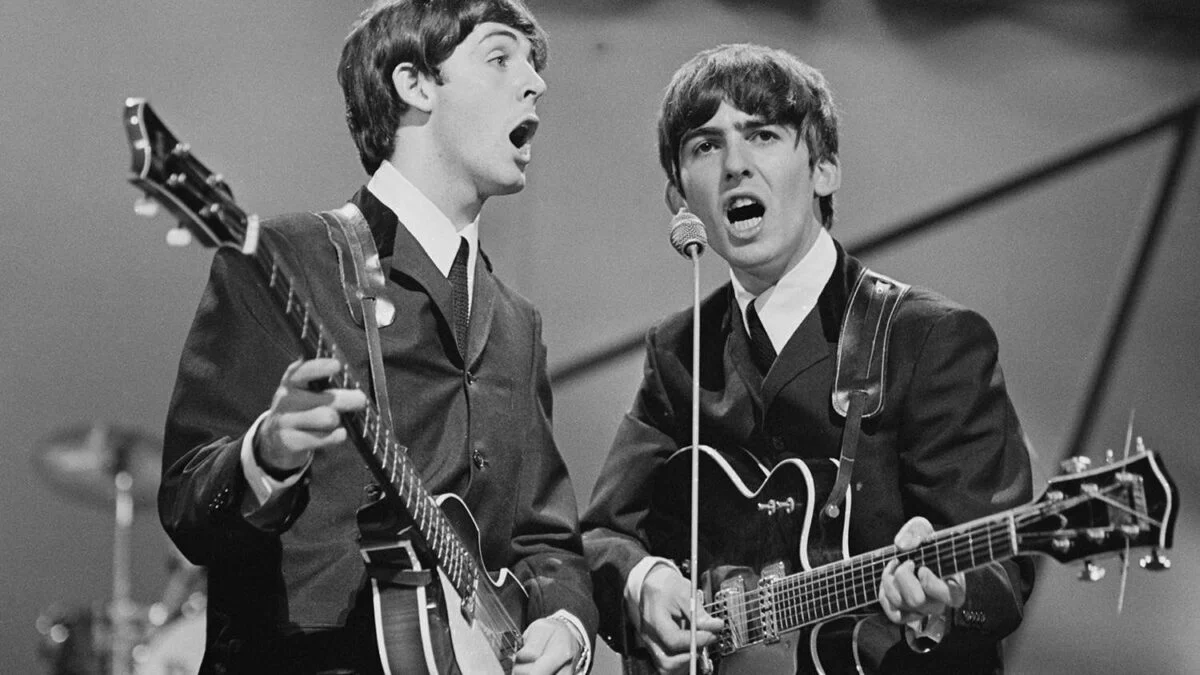
George Harrison’s opinion on Paul McCartney’s solo career
With just 13 studio albums, The Beatles were the most successful and influential band of all time. They sold an estimated 600 million records worldwide, making them the best-selling band in history, and they impacted several generations of musicians. However, John Lennon’s decision to quit the band in 1970 brought an end to the group’s […]
Leave A Comment Cancel reply
Save my name, email, and website in this browser for the next time I comment.
Post Comment
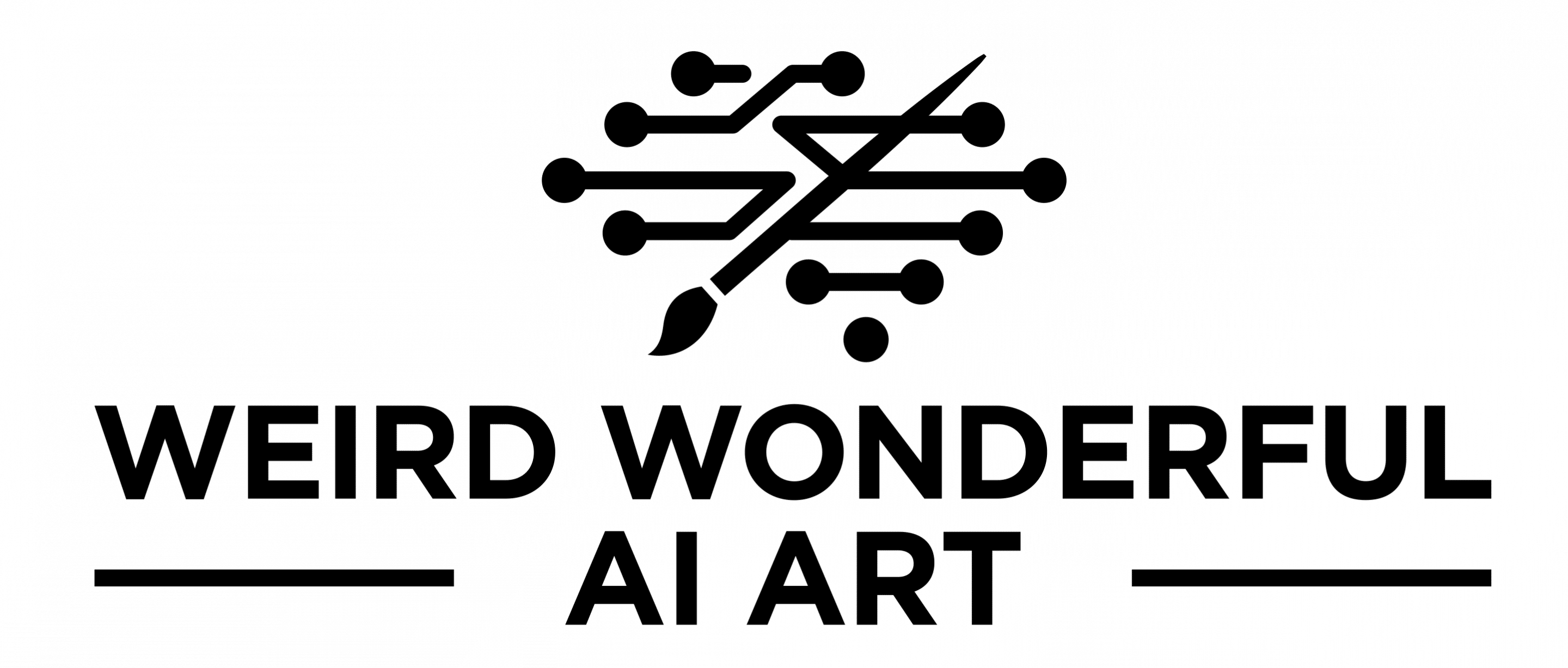
Midjourney – Style Chart by Robomar AI Art
by Harmeet | Aug 25, 2022 | Resources | 0 comments
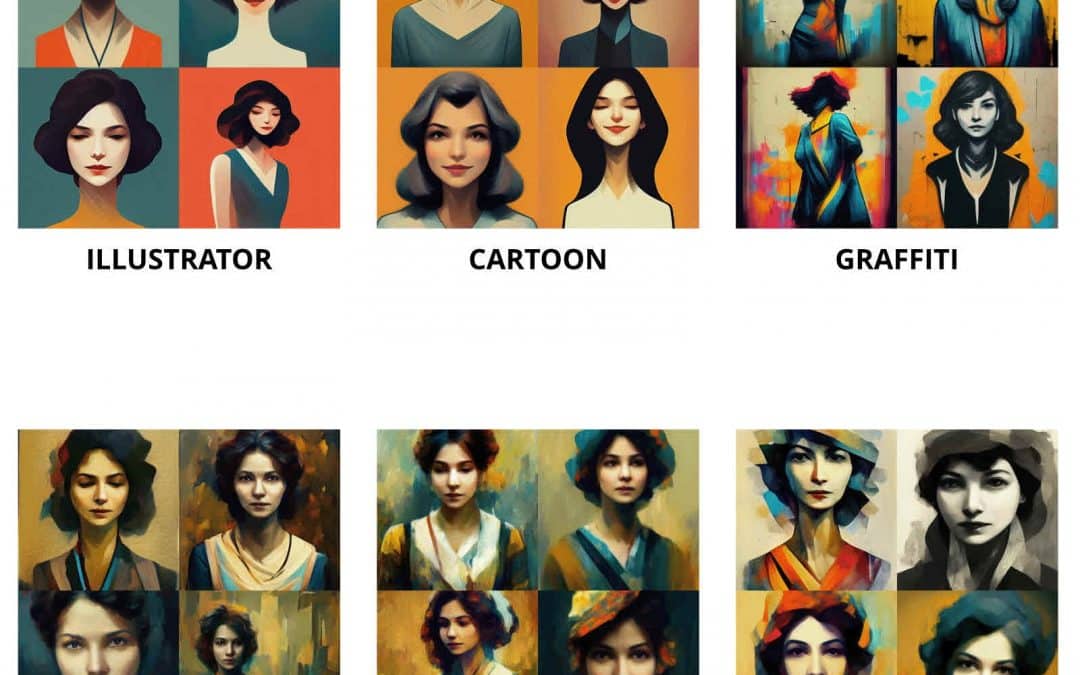
A wonderful find over on the Midjourney discord and I thought I’d share some of the wonderful work by Robomar .
Robomar used the prompt “Woman, (style name)” to create these wonderful examples of what you can expect to receive with a particular style in Midjourney. Style names are provided in the Visual Guide below the image grid, my particular favourite styles are: Halftone, Pop Art, ink drawing, charcoal, film noir.
He has a put in a lot more work in experimenting with styles and keeps releasing on his Instagram account so make sure you follow him there on his Instagram account @robomar.ai.art
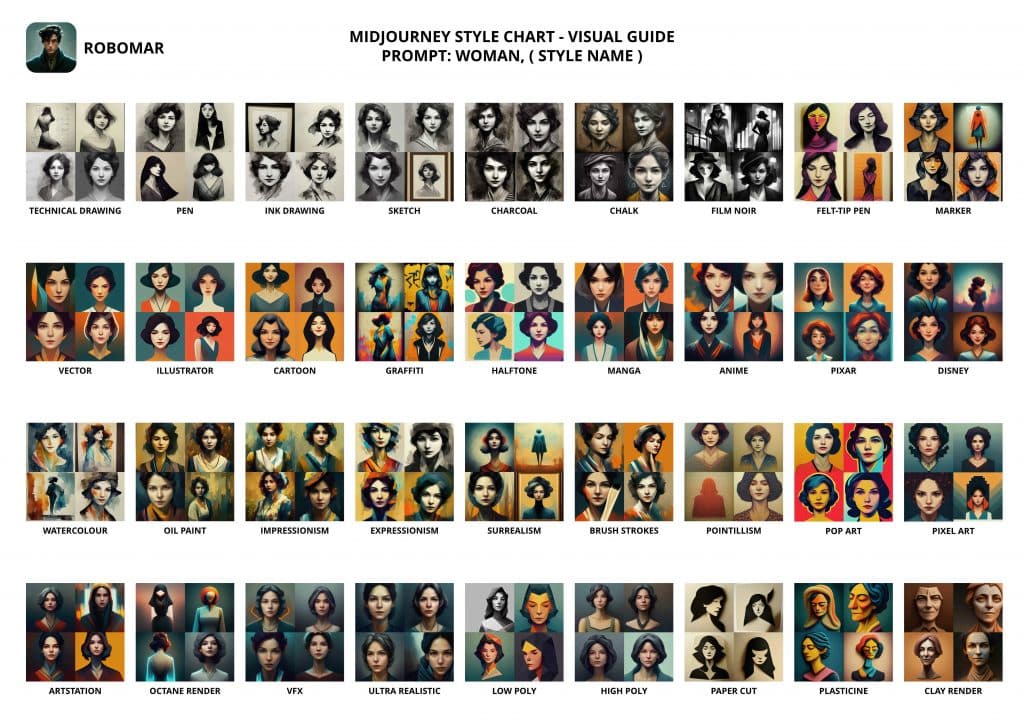
Since Robomar released the above Visual Guide, there are more posts added on the Instagram account which I have added below for more fun in Midjourney. Also, these style names can be used with other AI models as well but the results would vary.
View this post on Instagram A post shared by Robomar AI Art (@robomar.ai.art)
You may also like:
If you'd like to support our site please consider buying us a Ko-fi , grab a product or subscribe . Need a faster GPU, get access to fastest GPUs for less than $1 per hour with RunPod.io
Trackbacks/Pingbacks
- How to Tone Down Gaudy Images in Photoshop – Picozu - […] brand aesthetics can confuse and alienate your audience. By adhering to a more toned-down visual style, you reinforce brand…
- The Best Free AI Art Tools in May 2023 - […] * Midjourney Style Chart […]
Submit a Comment Cancel reply
Your email address will not be published. Required fields are marked *
Save my name, email, and website in this browser for the next time I comment.
This site uses Akismet to reduce spam. Learn how your comment data is processed .
Most Recent Posts
- Deforum Studio Motion Preset and Videos
- RunPod.io to Mega Cloud Sync
- Stable Diffusion 3 in ComfyUI
- Top 5 RunPod Templates for AI Image Generation
- Generate Magnific Level Details and Upscale using Automatic1111
You are using an outdated browser. Please upgrade your browser or activate Google Chrome Frame to improve your experience.
CREATE A TRANSLATOR LINGO JAM
Stylish Name Maker (𝓬𝓸𝓹𝔂 𝕒𝕟𝕕 𝖕𝖆𝖘𝖙𝖊 ♥)
LingoJam © 2024 Home | Terms & Privacy
Let's Try Ai
33 Best Art Styles for Midjourney + Prompt Examples
Using the right art style in your Midjourney prompts will help you get better results.
Written by: Milan K
Published on: April 19, 2023
Generating amazing images in Midjourney has a lot to do with the words you use in your prompts. In most cases, people aren't able to generate the exact images they imagine because they don't specify the art style accurately enough in their prompts.
That's why today I want to focus on the different art styles that you can use in your Midjourney prompts to get better results.
What I'm going to share in this article won't all be art styles and movements, but also some cool keywords that you can use to generate great images. For example, the keyword "Pixar" isn't a specific art style but it will help generate an image in a certain way.
I will also provide you with some good prompt examples for some of the art styles I mention in this article.
Before I start talking about the different art styles you can use in Midjourney, I want to note that each image shared in this article was made using the latest iteration of the AI model at the time of writing this article. In other words, they were made with Midjourney v5.
15 Popular Midjourney Art Styles
I'm going to start by sharing some of the more popular styles people use in Midjourney. These are styles that I often come across in the public Discord server for this AI image generation tool.
Steampunk is a style that's often used in Midjourney. It represents a subgenre of science fiction that represents retro-futuristic technology. This art style showcases how people in the 19th century imagined the future. Let me show you an example.
/imagine steampunk steam-powered vehicle resembling a flying car
With the prompt above, I was able to generate the following images.

Psychedelic art represents a style that doesn't need much introduction. It works great if you want to generate mind-bending and abstract images. Here is a prompt that I used to generate images in this style.
/imagine psychedelic art showing an eye staring into the window to a person's soul, repetitive patterns, trippy, weird, abstract, ethereal, otherworldly --ar 16:9
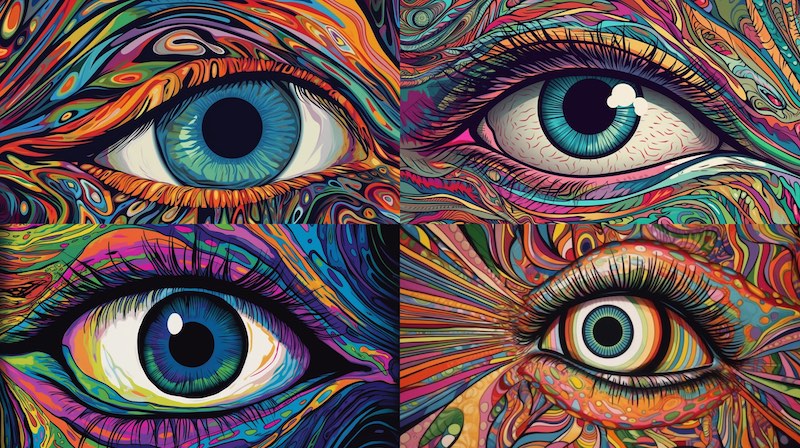
Glitch art is a style that will almost always provide you with incredible results in Midjourney. This is a style that incorporates errors or glitches for aesthetic purposes. It is meant to appear as if the image has been corrupted in some way. Here's an example.
/imagine glitch art portrait of a young woman that is half human and half machine in a dystopian world
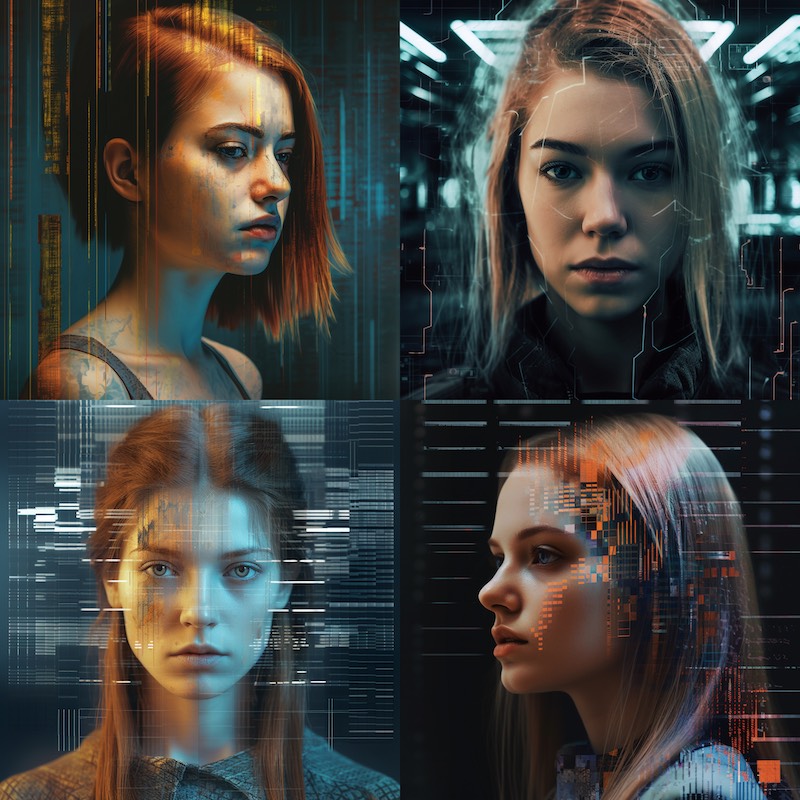
That fourth image looks like it could be a movie poster. Glitch art made in Midjourney never ceases to amaze me!
Watercolor art represents one of the oldest styles in the world. It has been used since the Paleolithic times. If you want to create something in Midjourney that looks like a painting instead of a digital image, you should try using the watercolor art keywords. Here is an example.
/imagine watercolor art painting showing the great pyramid opening up to release an ancient spacecraft that was hidden underneath it for millenia
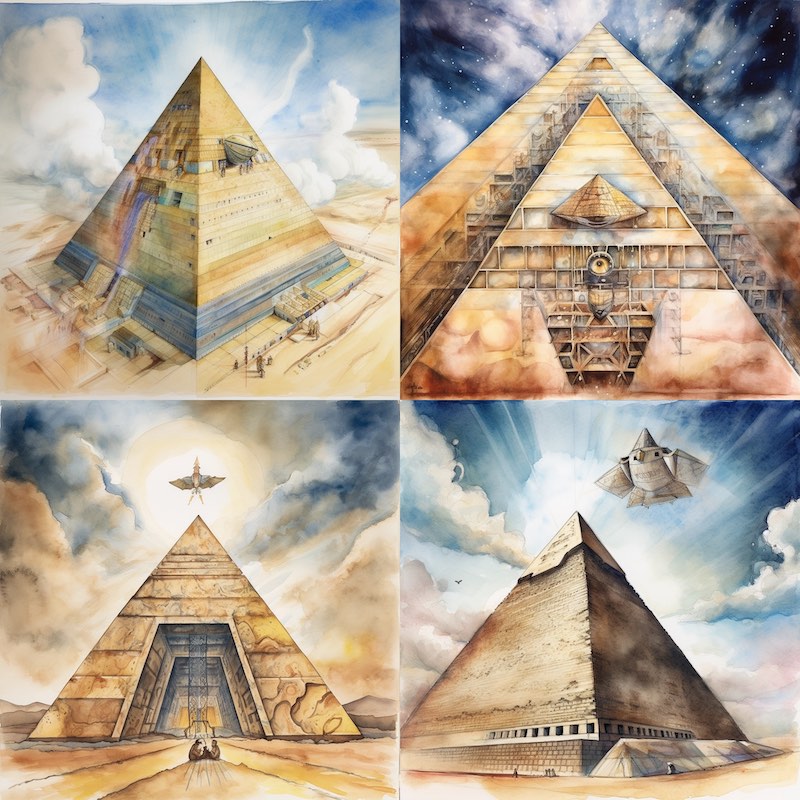
This is certainly an abstract image, and I like the way it turned out even though it's not how I initially imagined it.
Minimalism is another popular Midjourney art style. I think that this style doesn't need an introduction, so I won't give you a prompt example of it. You can simply include keywords such as "minimalism" and "minimalistic art" in your prompts. However, I will give you an example of a minimalist style called flat design .
Even if you're not familiar with the term "flat design" you have seen countless examples of it on the internet. It's a style that is mostly used in graphical user interfaces. Bright colors, crisp edges, and an overall clean aesthetic characterize this style. Here's an example.
/imagine flat design poster promoting a Chinese restaurant that focuses on food delivery, clean, bright colors, takeout, food delivery --ar 2:3

I really like the third and fourth images here. If you don't know, I want to mention that as of right now you can't instruct Midjourney to generate the text you want in its images. This feature will get added to a future iteration of the model. For now, you can edit the text using software like Adobe Illustrator or Photoshop.
Cyberpunk is a similar art style to steampunk in the sense that it focuses on a futuristic setting. This style emphasizes a combination of lowlife and high-tech. It works great on both portraits and landscape images.
/imagine cyberpunk portrait of a young woman wearing cheap torn clothing and holding a weapon in her hand with a futuristic city in the background, dark and detailed, intricate, ultra realistic, headshot, 8k, octane render

I added some keywords to this prompt that will help it appear more photorealistic, such as "intricate" and "octane render". I think it worked since the third image here is especially realistic.
Vaporwave is a visual art style that I see people often using to make images in Midjourney. It's a style that usually incorporates early Internet imagery. I love to use this style to generate landscape images of futuristic cities. Let me show you an example.
/imagine Vaporwave style image of a neon futuristic city, purple, dark blue, bright green, neon --ar 16:9

I included some colors here that I wanted to see. This is a cool trick that will help increase the chances of generating the images that you want.
If you spend any amount of time in the public Midjourney Discord server, you'll quickly see a lot of people generating images in an anime art style . Here is an example of what you can create in an anime style.
/imagine an anime style portrait of a man dressed in a business suit holding a mystical book radiating a bright green light, fantasy, ethereal, wondrous --ar 2:3
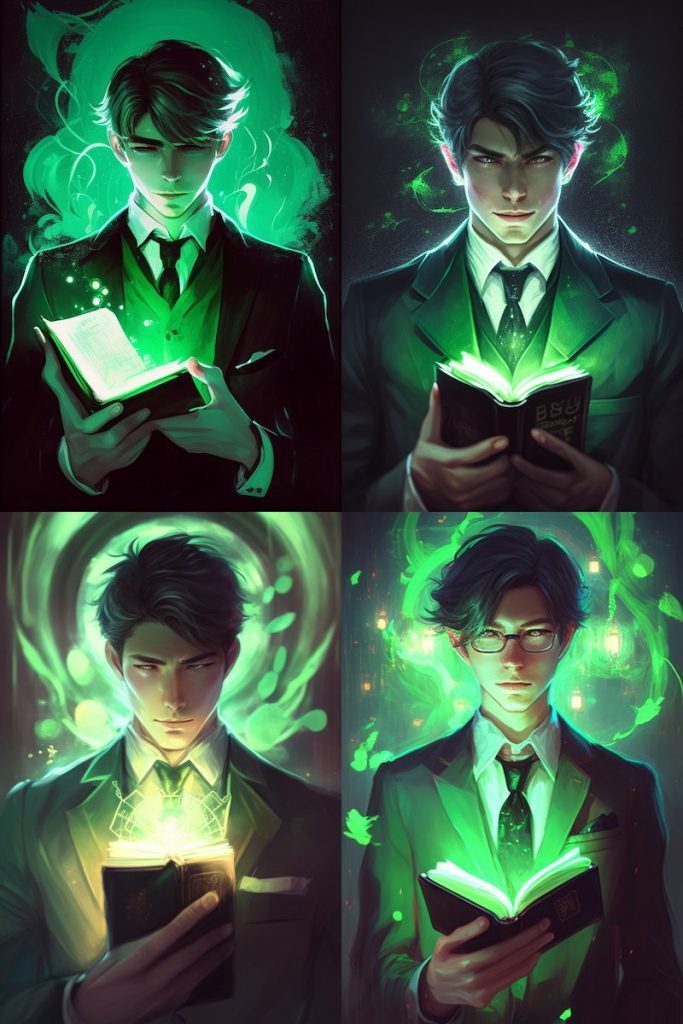
Surrealism is a cultural movement and art style that originated in the early 20th century. One of the major figures of surrealism is the legendary artist Salvador Dali. If you want to create an image in this art style that resembles the works of Salvador Dali, you can include his name in the prompt.
/imagine surrealism art style oil painting in the style of Salvador Dali showing how the unconscious mind perceives the evolution of life on Earth --ar 16:9
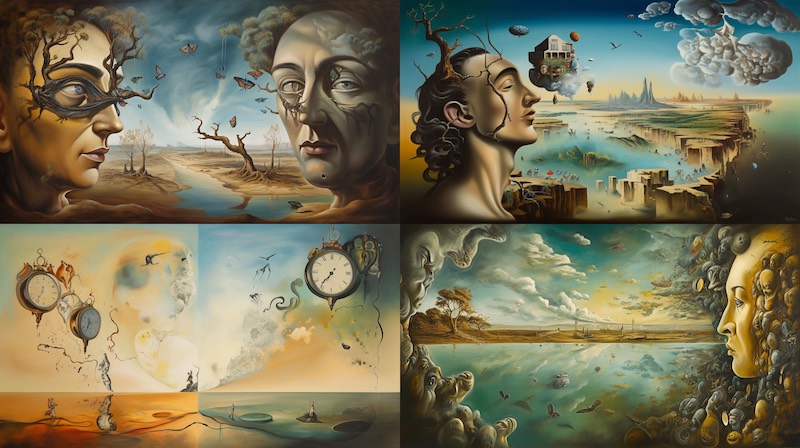
Art Deco is an art style that initially became popular in France during the 1910s before being widely used in the United States in the following few decades. This style emphasizes bold geometry and rich colors. Here is an example of an image generated in this style.
/imagine art deco style image showing the interior of a hotel filled with luxury items, photorealistic, rich colors, 1920s luxury --ar 16:9
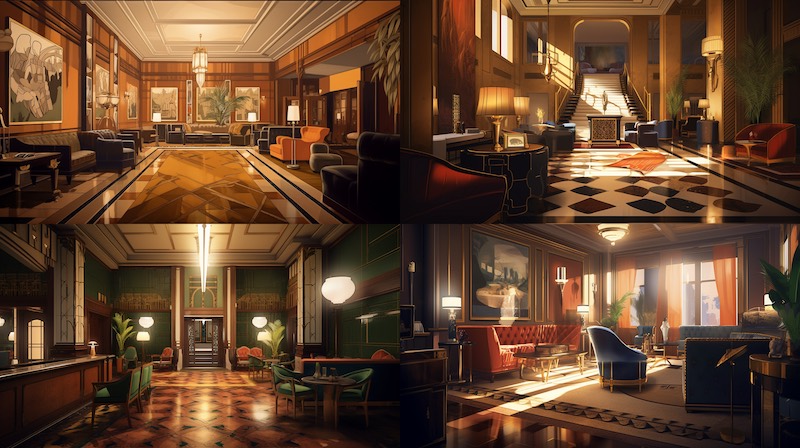
Abstract art is often used to create cool images in Midjourney. I like creating abstract art, as it's one of the few styles where less is more. Sometimes, you only need a few words in your prompt to create abstract art. I'll show you the following example.
/imagine abstract art painting displaying cognitive dissonance
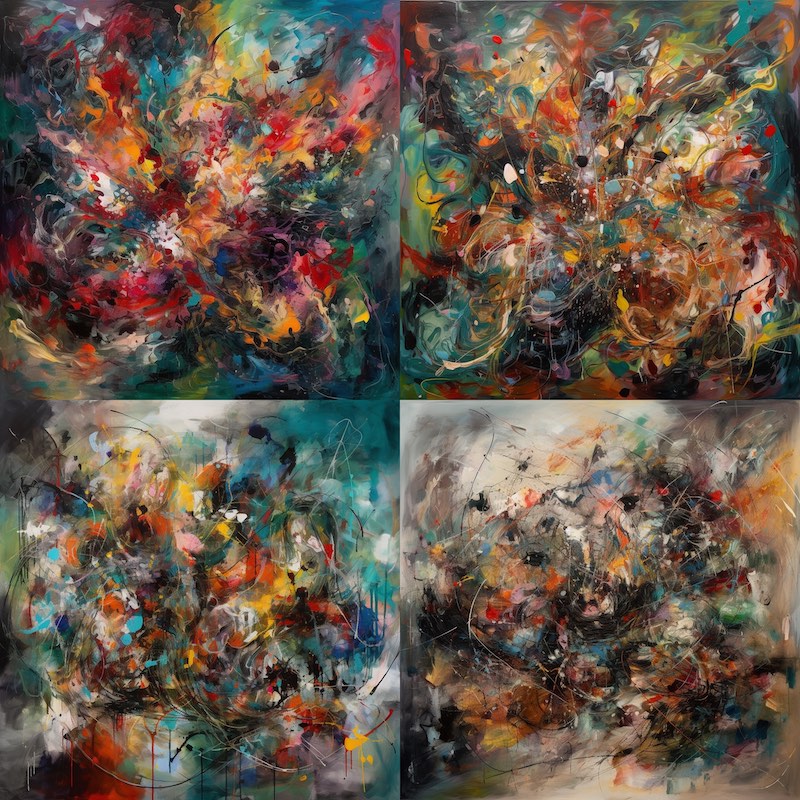
Impressionism is one of the most recognized art styles in history. It was a 19th-century art movement developed by some of the most notable French artists, including Monet, Paul Cezanne, and Edgar Degas.
/imagine impressionism style painting showing a person staring at ancient ruins --ar 16:9
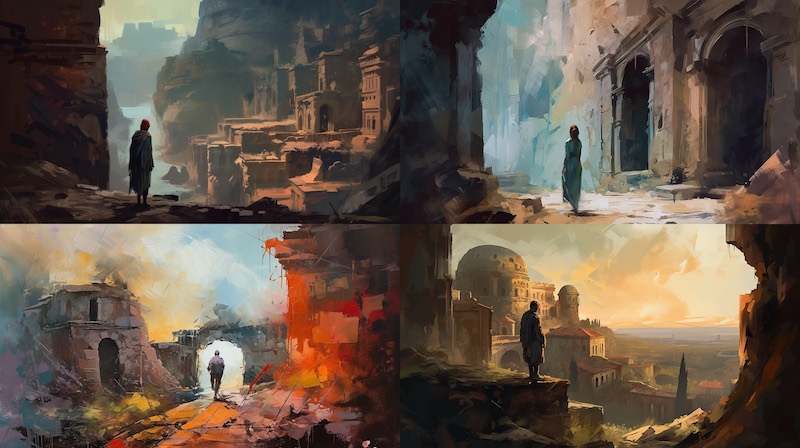
Cave painting is one of my favorite art styles in Midjourney. I especially like to use it to create something I'd like to see on an episode of Ancient Aliens. Apart from cave painting, you can also use the keyword "ancient art" to get similar results. Here is a prompt I wrote for this art style.
/imagine cave painting showing an alien spacecraft flying over a primitive civilization, ancient art --ar 16:9
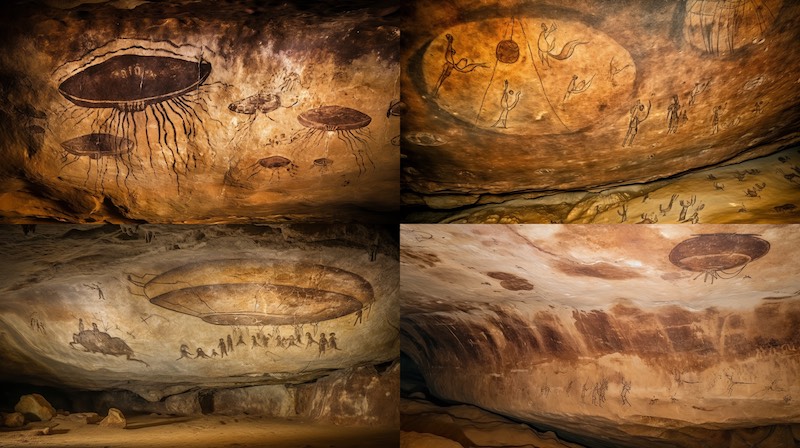
Hyperrealism represents an art style that started to become popular in the 1970s. It's a style that aims to resemble a high-resolution photograph. You can effectively use it in Midjourney for amazing results.
/imagine hyperrealism style close-up portrait of a very old but charming man, noticable wrinkles on his face, his eyes filled with knowledge and experience --ar 2:3

From what I’ve observed in the public Midjourney Discord server, I’d say that these are the most popular art styles used by people who interact with this AI model. However, there are additional styles that I’d like to mention since using them produces truly beautiful results.
18 More Popular Midjourney Art Styles
I talked about what I'd say are the most popular Midjourney art styles in the previous section of the article. I'm now going to mention additional art styles (and keywords that will help you get a certain result from your prompts), but this time I won't show you the end result. Instead, I want you to experiment with these styles in Midjourney.
Here are 18 more popular art styles people use in Midjourney:
Atompunk - A distinct and bright-colored art style that depicts the future as people from the 1950s and 1960s imagined it.
Pencil Drawing - You can make images generated in Midjourney look like they were drawn with a pencil by including the “pencil drawing” keyword in your prompt.
Fractalism - Do you like making abstract images that include repetitive patterns? If so, you can mention the fractalism style in your prompts.
Crayon Art - It’s always fun to look at art drawn with crayons. Use this keyword to get amazing results in Midjourney.
Chalk Art - If you use the chalk art style in your prompts, you should specify the color of the chalk. It can be a specific color or multicolored. If you want white chalk to be used in your images, it’s best to make sure the background is dark green.
Afrofuturism - The Afrofuturism visual art style is centered on Black history and culture. It contains elements of advanced technology, futurism, and science fiction.
Cubism - Georges Braque and Pablo Picasso are famous for this avant-garde art movement. It involves analyzing the subject in works of art, breaking it up into parts, and reassembling them in an abstract form.
2D Illustration - Two-dimensional art includes shapes that are completely flat. They comprise only sides and corners.
Pixar - Although it’s not a specific art style, Pixar movies have a certain flair to them. That’s why I recommend you use the “Pixar” or “Pixar style” keywords in prompts that will make images look like they’re straight from a 3D animated movie.
Gothic - The Gothic art style was developed during the 12th century and spread all across Western Europe.
Polaroid - If you want your images to feature a retro photography aesthetic, you should use “polaroid” related keywords in your prompts.
Art Nouveau - This is an art style that was popular from the 1890s to World War I, and is inspired by plant forms and nature.
Pop Art - Andy Warhol and Roy Lichtenstein are the most prominent figures of the pop art movement. It became popular during the 1950s and is characterized by imagery from popular and mass culture.
Coloring Book - Make your images appear like it’s straight out of a coloring book by using this keyword in your prompts.
Fantasy - If you want to include fantasy elements in images you generate, simply include the “fantasy” or “fantasy art” keywords in your prompts. You can also use the “dark fantasy” keyword for a darker aesthetic.
Low Poly - Low poly art is also called low polygon art. It's a style that is supposed to be used to create images that favor straightforward geometry and colors over life-like art. It's mainly used for illustrations, video game design, and animation.
Pixel Art - Pixel art is associated with low-resolution graphics from the age of 8-bit and 16-bit computers but it remains a popular style to this day. Midjourney can produce awesome pixel art.
It would be impossible for me to list every art style and movement in existence, so I'm certainly missing a lot here. My intent was to focus on the most popular art styles I've seen people using in Midjourney.
I advise that you continue researching and learning about different styles and keywords you can incorporate into your prompts.
Make Better Midjourney Images With These Art Styles
There is no doubt that using the art styles mentioned in this article when you're writing Midjourney prompts will help you get better results.
What's great about Midjourney is that you use your creativity to mix and match different styles and see what type of results you'll get. AI image generation models like Midjourney enable you to easily express your creativity as much as possible.
Once you enter a prompt, an image will usually be generated within 60 seconds. That means that you can experiment with all of the art styles I mentioned in this article in less than an hour.
Leave a Comment Cancel reply
Save my name, email, and website in this browser for the next time I comment.
About Milan K
How to Make Logos With Midjourney (+ Prompt Examples)
Learn how to prompt with the midjourney describe command.
- My Portfolio
- Design Tutorials
- Canva for Design
- Profit from Design
- Random Designer Thoughts
- DesignBites
- 📟 Aspect Ratio Calculator
MidJourney Style Guide: 101 Art & Photography Styles With Examples
- 20 min read
Are you a MidJourney user or graphic designer looking for inspiration or new styles to explore? You’ve come to the right place!
In this article, I’ll introduce you to 101 art and photography styles that can help you spice up your MidJourney designs and expand your artistic horizons. Whether you’re working on a new project or want to learn more about various art movements and techniques, this comprehensive guide is the perfect resource.
To make it easier for you to navigate, I’ve organized the art styles into four major categories: Traditional Fine Arts, Digital Arts, Photography, and Design. For each style, I’ve included:
- A brief description
- Notable artists
- A sample image of the style generated with MidJourney – click on any sample to open a larger version
- The MidJourney prompt I used (I kept each prompt simple so you can see the basic style – make sure and add your own flair to get amazing images)
I’ll continue to add more MidJourney sample images and styles, so this MidJourney style resource will keep growing!
Why You Should Use Art & Photography Styles in MidJourney V5
The latest MidJourney Version 5 brings significant improvements to AI-generated art and photography. This alpha version offers a wider stylistic range, increased realism, and enhanced responsiveness to prompts. MidJourney V5 has also improved in rendering more details, such as subtleties, intricate patterns, and group portraits.
However, it also requires a more thoughtful and deliberate approach to prompting. The model’s “unopinionatedness” can lead to more literal and less artistic outcomes and more photorealistic images when you want “artsy,” not to mention dull defaults. This enhanced realism includes a tendency for V5 to generate images that are more literal and less artistic by default.
If you want to get the best from MidJourney V5, specify an aesthetic style.
The style references have become much more impactful in this version. To truly make MidJourney V5 shine, embrace the power of style modifiers.
Including art or photography styles in your MidJourney AI text-to-image prompts is crucial. By doing so, you can fully harness the potential of MidJourney V5 and generate stunning, engaging, and diverse images.
In addition, short prompts may not work as well in this version; use complex prompts instead. By writing longer and more explicit text about what you want, you can achieve better results with MidJourney V5.
Now, let’s get to the art and photography styles!
Traditional Fine Arts
From the classic to the contemporary, the traditional fine arts category spans numerous art styles that have shaped the course of art history. These styles range from Realism to Conceptual Art, offering diverse approaches to visual expression. Below is a table detailing various traditional art styles:
Popular Art Medium Styles
Artists have various mediums at their disposal, each offering unique qualities and characteristics. In this section, we will explore some of the most popular and widely recognized art medium styles, including watercolor, oil painting, and more.
Digital Arts
As technology continues to advance, digital arts have become an increasingly popular and versatile medium for artists. This category encompasses a wide range of styles, including digital painting, digital drawing, and new media art. Explore the different digital art styles in the table below:
Popular Digital Art Styles
Digital art has opened up a whole new world of possibilities for artists, allowing them to experiment with various styles and techniques. In this section, we will explore some of the most popular and widely recognized digital art styles, including Anime, Fantasy, and more.
Photography
Photography offers an endless array of possibilities for capturing the world around us. Whether you’re interested in documentary, landscape, or street photography, there’s a style to suit every passion. Discover various photography styles in the table below:
Design is an integral part of our daily lives, influencing the aesthetics and functionality of the objects and spaces we interact with. This category covers art styles related to interior design, industrial design, and textile design, among others. Check out the different design styles in the table below:
I hope this comprehensive guide to 101 art and photography styles inspires you to explore new creative avenues and expand your artistic repertoire. With so many MidJourney styles to choose from, there’s no limit to what you can create. Happy designing!
Related Posts
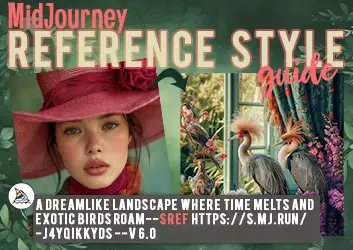
New MidJourney Style Reference: The Ultimate Guide
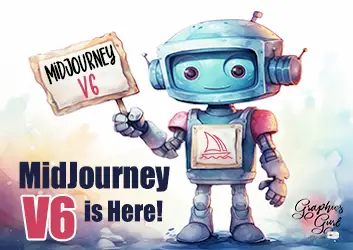
MidJourney V6 Alpha is Here!
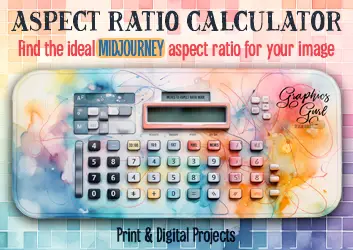
Midjourney Aspect Ratio Calculator

Common MidJourney Aspect Ratios for Social Media and Design Projects
2 thoughts on “midjourney style guide: 101 art & photography styles with examples”.
Thanks for your efforts here. Can’t recall what I may have clicked to get here, but happy for that click.
Keep up the interesting/great work here. I’ll be back
And Cheers from Southwest Ohio
Hi Michael, I appreciate the encouraging comment…thank you!
Thoughts? Leave a Comment Below:
Your email address will not be published. Required fields are marked *
Save my name, email, and website in this browser for the next time I comment.

ANDREI KOVALEV'S MIDJOURNEY STYLES LIBRARY
Most popular guides.
- IN-DEPTH UPSCALE AI-ART FOR HIGH QUALITY PRINTING →
- IN-DEPTH 9 PROMPTS—9 STORIES. MIDLIBRARY BENCHMARK EXPLAINED →
DAILY NEW STYLES ON OUR INSTAGRAM →
- Arthur Tress
- Brian Froud
- Randolph Caldecott
- Cecily Brown
MIDJOURNEY AI REFERENCE STYLES
- 159 NIJI ANIME STYLES
- 159 GENRES + MOVEMENTS V4
- 121 TECHNIQUES V4
- 247 PAINTERS V4
- 206 ILLUSTRATORS V4
- 190 PHOTOGRAPHERS V4
- NEW! 65 FILMMAKERS V4
- 46 ARCHITECTS V4
- 40 DESIGNERS V4
- 37 FASHION DESIGNERS V4
- 22 STREET ARTISTS V4
- 88 VARIOUS ARTISTS V4
ANDREI KOVALEV'S MID LIBRARY
Send feedback.

- Machine Learning
- Cybersecurity
- Internet of Things
- Whitepapers
- Energy & Environment
- Industrial Goods & Services
- Marketing & Sales
- Retail & Consumer
- Technology & IT
- Transportation & Logistics
- Legal & Privacy
- Partner With Us
- Writers wanted
Midjourney Styles unveiled: Level up your generations
The entire midjourney styles list was leaked due to a discord admin's mistake. this list, which has more than 20,000 entries, contains ethical concerns and is worth a library for digital artists..
A storm is brewing in the world of AI art. A recently leaked database, dubbed the “ Midjourney Styles List ” has thrown open the doors on the training process of popular AI image generator Midjourney.
Inside the Midjourney Styles List, nestled among lines of code, rests a controversial truth: the names of over 16,000 artists whose work, it’s believed, has been used to fuel the algorithm’s creative engine.
This revelation has cast a dark shadow on the burgeoning field of AI art, reigniting long-simmering anxieties about ownership, copyright, and the very definition of artistic creation. For years, whispers of AI models “mimicking” existing styles have swirled around galleries and online forums.
Now, with names and evidence laid bare, the questions escalate from hushed concerns to a potential roar of legal challenges and ethical reckonings.
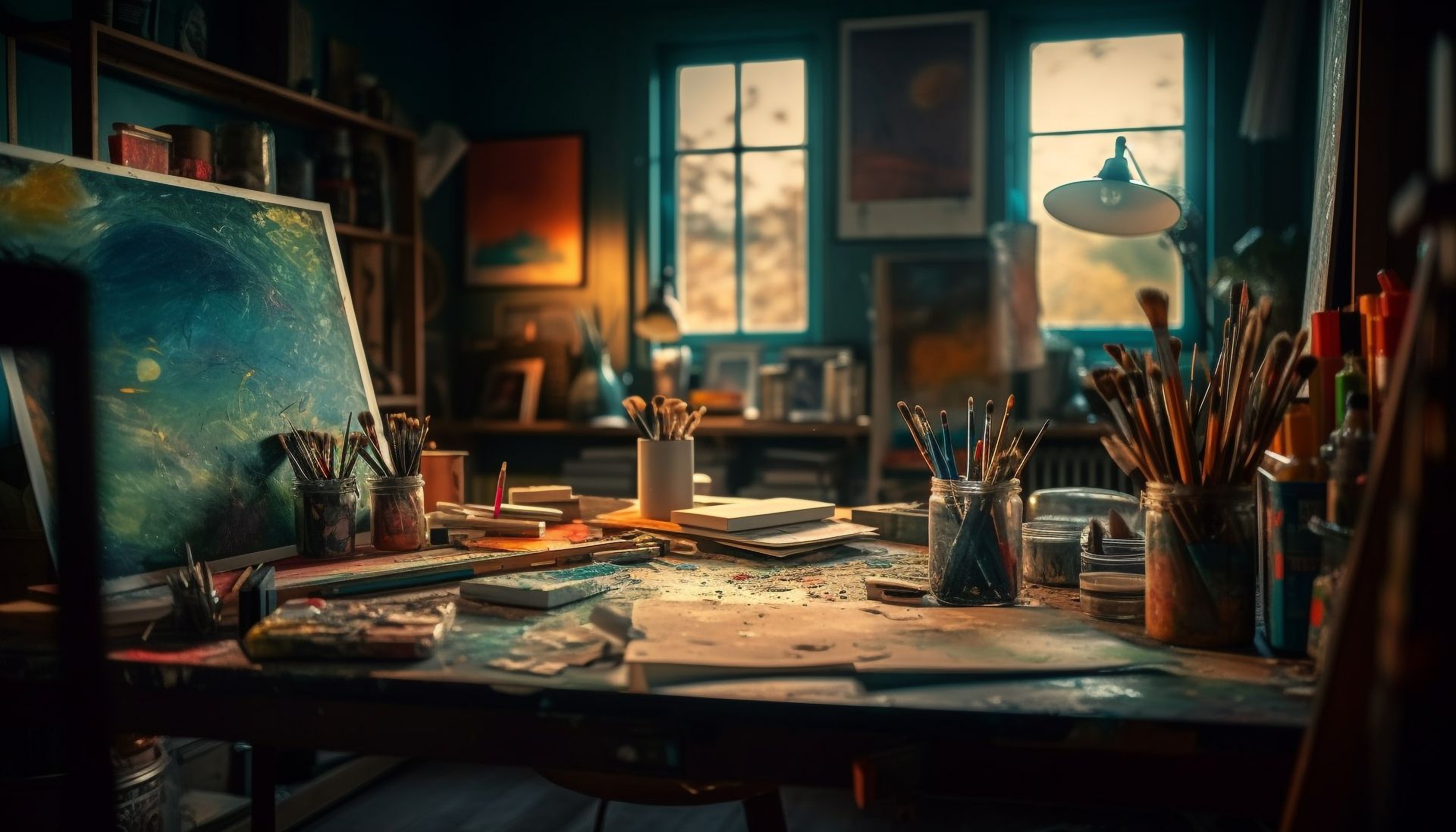
What’s on the Midjourney Styles List?
The Midjourney Styles List reportedly contains over 16,000 entries , likely referring to the names of individual artists or artistic movements used to train the Midjourney AI model. This suggests a vast and diverse range of styles and influences the model can draw from.
The extent to which specific artists’ styles are directly copied or merely used as inspiration in Midjourney’s generation process remains unclear. However, the Midjourney Styles List leak has raised concerns about copyright infringement, artistic agency, and the ethical implications of using artists’ work without their explicit consent.
Since the leak of the Midjourney Styles List, Midjourney hasn’t released the full list or officially commented on its contents. This lack of transparency adds fuel to the ethical concerns and underscores the need for open dialogue and clear guidelines surrounding AI art creation.
And how did we find out about the Midjourney Styles List? Well, let Jon Lam #CreateDontScrape on X explain:
Midjourney developers caught discussing laundering, and creating a database of Artists (who have been dehumanized to styles) to train Midjourney off of. This has been submitted into evidence for the lawsuit. Prompt engineers, your “skills” are not yours https://t.co/wAhsNjt5Kz pic.twitter.com/EBvySMQC0P — Jon Lam #CreateDontScrape (@JonLamArt) December 31, 2023
Which styles are in the Midjourney Styles List?
Midjourney Styles List has shown that the popular AI image generation tool utilizes the following styles:
With these three main categories in the Midjourney Styles List, users are able to generate great images.

Midjourney Styles List: Times
- 1000–1400 CE – The art style during the period of 1000-1400 CE was Gothic
- 15th Century – The Early Netherlandish art style emerged during the 15th century
- 16th Century – The High Renaissance art style flourished in the 16th century
- 17th Century – The Baroque art style developed during the 17th century
- 1860–1969 – Realism and Naturalism were the prominent art styles between 1860 and 1969
- 18th Century – The Rococo art style was popular during the 18th century
- 1900–1917 – Expressionism emerged as an art style during the period of 1900-1917
- 1918–1939 (Interwar) – The Interwar period saw the rise of Surrealism
- 1940s–1950s – Abstract Expressionism was a prominent art style during the 1940s and 1950s
- 1960s – Pop Art became a popular art style during the 1960s
- 1970–present – Postmodernism has been a dominant art style since the 1970s
- 1970s – Photorealism emerged as an art style during the 1970s
- 1980s – Neo-Expressionism was a notable art style during the 1980s
- 1990s – Digital Art has become a significant art style in the 1990s and continues to the present day
- 19th Century – Romanticism was a prominent art style during the 19th century
- 21st Century – Contemporary Art is a term used to describe art produced since the turn of the 21st century.
- Ancient Art – Refers to the art produced in ancient civilizations, such as Egypt, Greece, and Rome, from 5000 BCE to 500 CE

Midjourney Styles List: Punk style
- aetherclockpunk punk style – The aetherclockpunk art style is characterized by its use of clockwork and steam power elements, often set in a fictional world with a Victorian-era aesthetic, and emerged during the late 19th to early 20th centuries
- aetherpunk punk style – Aetherpunk, also known as dieselpunk, is a subgenre of science fiction that combines elements of the diesel engine and punk culture, often set in a post-apocalyptic world with a retro-futuristic aesthetic, and emerged in the late 20th century
- algeapunk punk style – Algeapunk is a subgenre of science fiction that combines elements of algae and punk culture, often set in a world where algae has become a dominant source of energy and resources, and emerged in the late 20th century
- alienpunk punk style – Alienpunk is a subgenre of science fiction that combines elements of extraterrestrial life and punk culture, often set in a world where aliens have invaded or coexist with humans, and emerged in the late 20th century
- atompunk punk style – Atompunk is a subgenre of science fiction that combines elements of atomic energy and punk culture, often set in a post-apocalyptic world with a retro-futuristic aesthetic, and emerged in the mid-20th century
- aurorapunk punk style – Aurorapunk is a subgenre of science fiction that combines elements of aurora and punk culture, often set in a world where the aurora borealis has become a symbol of hope and rebellion, and emerged in the late 20th century
- autopunk punk style – Autopunk is a subgenre of science fiction that combines elements of automobiles and punk culture, often set in a world where cars have become a dominant mode of transportation and a symbol of rebellion, and emerged in the mid-20th century
- avacadopunk punk style – Avacadopunk is a subgenre of science fiction that combines elements of avocados and punk culture, often set in a world where avocados have become a dominant source of food and resources, and emerged in the late 20th century
- avocadopunk punk style – Avocadopunk is a subgenre of science fiction that combines elements of avocados and punk culture, often set in a world where avocados have become a dominant source of food and resources, and emerged in the late 20th century
- berrypunk punk style – Berrypunk is a subgenre of science fiction that combines elements of berries and punk culture, often set in a world where berries have become a dominant source of food and resources, and emerged in the late 20th century
- Bibliopunk punk style – Bibliopunk is a subgenre of science fiction that combines elements of books and punk culture, often set in a world where books have become a rare and valuable resource, and emerged in the late 20th century
- biopunk punk style – Biopunk is a subgenre of science fiction that combines elements of biotechnology and punk culture, often set in a world where biotechnology has become a dominant force in society, and emerged in the late 20th century
- Bronzepunk punk style – Bronzepunk is a subgenre of science fiction that combines elements of bronze and punk culture, often set in a world where bronze has become a dominant material for buildings and cities
- Cargopunk punk style – A futuristic art style that imagines a world where cargo cults have created their own advanced technologies
- carpetpunk punk style – A fantasy art style that envisions a world where magic and technology are intertwined, often featuring ornate carpets and tapestries
- celestialpunk punk style – A space-faring art style that explores the cosmos and often features celestial bodies, space travel, and extraterrestrial life
- chinapunk punk style – A cyberpunk-inspired art style that incorporates elements of Chinese culture and aesthetics, often featuring neon-lit cityscapes and futuristic technology, one of our favorite entries in Midjourney Styles List
- chromepunk punk style – A colorful and vibrant art style that celebrates individuality and self-expression, often featuring bold, bright colors and abstract shapes
- chronopunk punk style – A time-traveling art style that explores different eras and cultures, often featuring steam-powered machinery and Victorian-era aesthetics
- citypunk punk style – An urban art style that explores the gritty, high-tech world of city life, often featuring skyscrapers, neon lights, and futuristic transportation
- clockpunk punk style – A steampunk-inspired art style that incorporates elements of time and clockwork, often featuring intricate gears and springs
- cloudpunk punk style – A dreamy, ethereal art style that explores the realm of clouds and sky, often featuring floating islands, airships, and fantastical creatures
- clownpunk punk style – A whimsical and playful art style that celebrates the absurd and the surreal, often featuring clowns, circuses, and carnival themes
- coralpunk punk style – A futuristic art style that imagines a world where coral reefs have become the dominant ecosystem, often featuring bioluminescent creatures and underwater cities
- Corporate Punk punk style – A dystopian art style that explores the darker side of corporate culture, often featuring suited businessmen, cybernetic enhancements, and industrial landscapes
- cottagepunk punk style – A cozy, rustic art style that celebrates the simple life, often featuring cottages, gardens, and natural landscapes
- Cripplepunk punk style – A dark, gothic art style that explores themes of mortality, often featuring skulls, crosses, and other symbols of death
- crustpunk punk style – A raw, unpolished art style that celebrates the DIY ethos, often featuring crustaceans, sea creatures, and other oceanic themes
- cryptopunk punk style – A mysterious and enigmatic art style that explores the hidden and the unknown, often featuring cryptic symbols, secret societies, and mysterious artifacts
- cyberaetherpunk punk style – A futuristic art style that combines elements of cyberpunk and aetherpunk, often featuring advanced technology and ethereal, dreamlike landscapes
- cybermysticpunk punk style – A mystical art style that incorporates elements of cyberpunk, often featuring futuristic technology and mystical symbols, with a focus on spirituality and the unknown
- cybermysticsteampunk punk style – A steampunk-inspired art style that incorporates elements of cyberpunk and mysticism, often featuring steam-powered machinery, gothic architecture, and mystical artifacts

- CyberneticPunk punk style – A cyberpunk-inspired art style that focuses on the integration of technology and humanity, often featuring cybernetic enhancements, robots, and futuristic cityscapes
- cyberpunk punk style – A futuristic art style that explores the intersection of technology and humanity, often featuring advanced technology, corporations, and cybernetic enhancements
- cyberpunkpunk punk style – A punk rock-inspired art style that incorporates elements of cyberpunk, often featuring rebellious, DIY ethos, and a focus on the underground and alternative culture
- cyberraypunk punk style – A futuristic art style that combines elements of cyberpunk and raypunk, often featuring advanced technology, futuristic architecture, and a focus on light and color
- cybersteampunk punk style – A steampunk-inspired art style that incorporates elements of cyberpunk, often featuring steam-powered machinery, gothic architecture, and advanced technology
- cyperpunk punk style – A futuristic art style that explores the intersection of technology and punk rock, often featuring advanced technology, rebellious themes, and a focus on the underground and alternative culture
- cypherpunk punk style – A mysterious and enigmatic art style that incorporates elements of cyberpunk and cryptography, often featuring cryptic symbols, secret societies, and mysterious artifacts
- Daydreampunk punk style – A dreamy, ethereal art style that explores the realm of daydreams and the subconscious, often featuring whimsical, fantastical creatures and landscapes
- decopunk punk style – An art deco-inspired art style that combines elements of cyberpunk and steampunk, often featuring ornate, geometric patterns, and a focus on luxury and opulence
- derppunk punk style – A derpy, absurdist art style that celebrates the silly and the surreal, often featuring cartoonish characters, bright colors, and absurd scenarios
- desertpunk punk style – A post-apocalyptic art style that explores the harsh, arid landscapes of the desert, often featuring sandy dunes, ruins, and survivalist themes
- dieselpunk punk style – A diesel-powered art style that combines elements of cyberpunk and steampunk, often featuring diesel engines, industrial machinery, and a focus on alternative energy
- Dinopunk punk style – A prehistoric art style that explores the world of dinosaurs, often featuring fantastical, sci-fi elements and a focus on survival and adventure
- diselpunk punk style – A subgenre of science fiction that combines elements of the diesel era (1920s-1950s) with retro-futuristic technology and aesthetics
- Dracopunk punk style – A subgenre of cyberpunk that incorporates elements of vampire culture and mythology, often featuring dark, gothic themes and futuristic technology
- draftpunk punk style – A subgenre of science fiction that explores the intersection of technology and handmade craftsmanship, often featuring steampunk-inspired aesthetics with a focus on manual skills and traditional crafts
- dreampunk punk style – A subgenre of science fiction that explores the intersection of technology and dreams, often featuring surreal, fantastical elements and a focus on the subconscious mind
- Europunk punk style – A subgenre of science fiction that explores the intersection of technology and European culture, often featuring dark, gritty themes and a focus on the societal and political implications of technology
- fantasypunk punk style – A subgenre of science fiction that combines elements of fantasy and punk aesthetics, often featuring magical or supernatural elements and a focus on rebellion and social upheaval
- fiberpunk punk style – A subgenre of science fiction that explores the intersection of technology and textiles, often featuring steampunk-inspired aesthetics with a focus on clothing, fabric, and other textiles
- fibrepunk punk style – A subgenre of science fiction that combines elements of punk aesthetics with floral and botanical themes, often featuring bright, colorful imagery and a focus on natural, organic forms
- floralpunk punk style – A subgenre of science fiction that combines elements of punk aesthetics with floral and botanical themes, often featuring bright, colorful imagery and a focus on natural, organic forms
- flowerpunk punk style – A subgenre of science fiction that explores the intersection of technology and foam, often featuring futuristic, surreal elements and a focus on the versatility and malleability of foam as a material, one of our favorite entries in Midjourney Styles List
- foampunk punk style – A subgenre of science fiction that combines elements of punk aesthetics with folk culture and mythology, often featuring earthy, natural themes and a focus on community and tradition
- Folk Punk punk style – A subgenre of science fiction that explores the intersection of technology and nature, often featuring elements of environmentalism and a focus on the relationship between humans and the natural world, one of our favorite entries in Midjourney Styles List
- Forestpunk punk style – A subgenre of science fiction that explores the intersection of technology and nature, often featuring elements of environmentalism and a focus on the relationship between humans and the natural world
- fractalpunk punk style – A subgenre of science fiction that combines elements of fractal geometry and punk aesthetics, often featuring complex, self-similar patterns and a focus on the beauty and complexity of natural forms
- frostpunk punk style – A subgenre of science fiction that explores the intersection of technology and cold, icy environments, often featuring dark, gritty themes and a focus on survival and resilience in harsh conditions
- futurepunk punk style – A subgenre of science fiction that explores the intersection of technology and futuristic societies, often featuring bright, neon-lit imagery and a focus on the impact of technology on human society
- Gadgetpunk punk style – A subgenre of science fiction that combines elements of punk aesthetics with a focus on gadgets, gizmos, and other technological devices, often featuring steampunk-inspired imagery with a modern twist
- genepunk punk style – A subgenre of science fiction that explores the intersection of technology and genetics, often featuring themes of genetic engineering and a focus on the ethical implications of manipulating human DNA
- geopunk punk style – A subgenre of science fiction that explores the intersection of technology and geology, often featuring elements of environmentalism and a focus on the relationship between humans and the Earth’s natural resources
- ghoulpunk punk style – A subgenre of science fiction that combines elements of punk aesthetics with elements of horror and the supernatural, often featuring dark, macabre imagery and a focus on the darker side of human nature
- glitchpunk punk style – A subgenre of science fiction that explores the intersection of technology and glitch art, often featuring imagery that is distorted, fragmented, or otherwise manipulated through digital means
- goosepunk punk style – A subgenre of science fiction that combines elements of punk aesthetics with elements of rural, farm-based culture, often featuring imagery of agriculture, animals, and the natural world
- gothicpunk punk style – A subgenre of science fiction that combines elements of punk aesthetics with elements of gothic culture and horror, often featuring dark, atmospheric imagery and a focus on the darker side of human experience
- Hermitpunk punk style – A subgenre of science fiction that explores the intersection of technology and solitary, hermit-like lifestyles, often featuring imagery of isolation, introspection, and self-sufficiency
- icepunk punk style – A subgenre of science fiction that explores the intersection of technology and icy, cold environments, often featuring dark, gritty themes and a focus on survival and resilience in harsh conditions
- industrialpunk punk style – A subgenre of science fiction that combines elements of punk aesthetics with elements of industrial culture, often featuring imagery of factories, machinery, and urban decay, one of our favorite entries in Midjourney Styles List
- junglepunk punk style – A subgenre of science fiction that combines elements of punk aesthetics with elements of jungle and tropical environments, often featuring lush, vibrant imagery and a focus on the intersection of technology and nature
- kawaiipunk punk style – A subgenre of science fiction that combines elements of punk aesthetics with elements of Japanese kawaii culture, often featuring cute, playful imagery and a focus on the intersection of technology and cuteness
- kombuchapunk punk style – A subgenre of science fiction that explores the intersection of technology and fermentation, often featuring imagery of brewing, distillation, and other fermentation processes
- Lunarpunk punk style – A subgenre of science fiction that explores the intersection of technology and lunar environments, often featuring imagery of space exploration, moon colonies, and the intersection of technology and the natural world
- magipunk punk style – A subgenre of science fiction that combines elements of punk aesthetics with elements of magic and fantasy, often featuring imagery of spellcasting, mythical creatures, and the intersection of technology and the supernatural
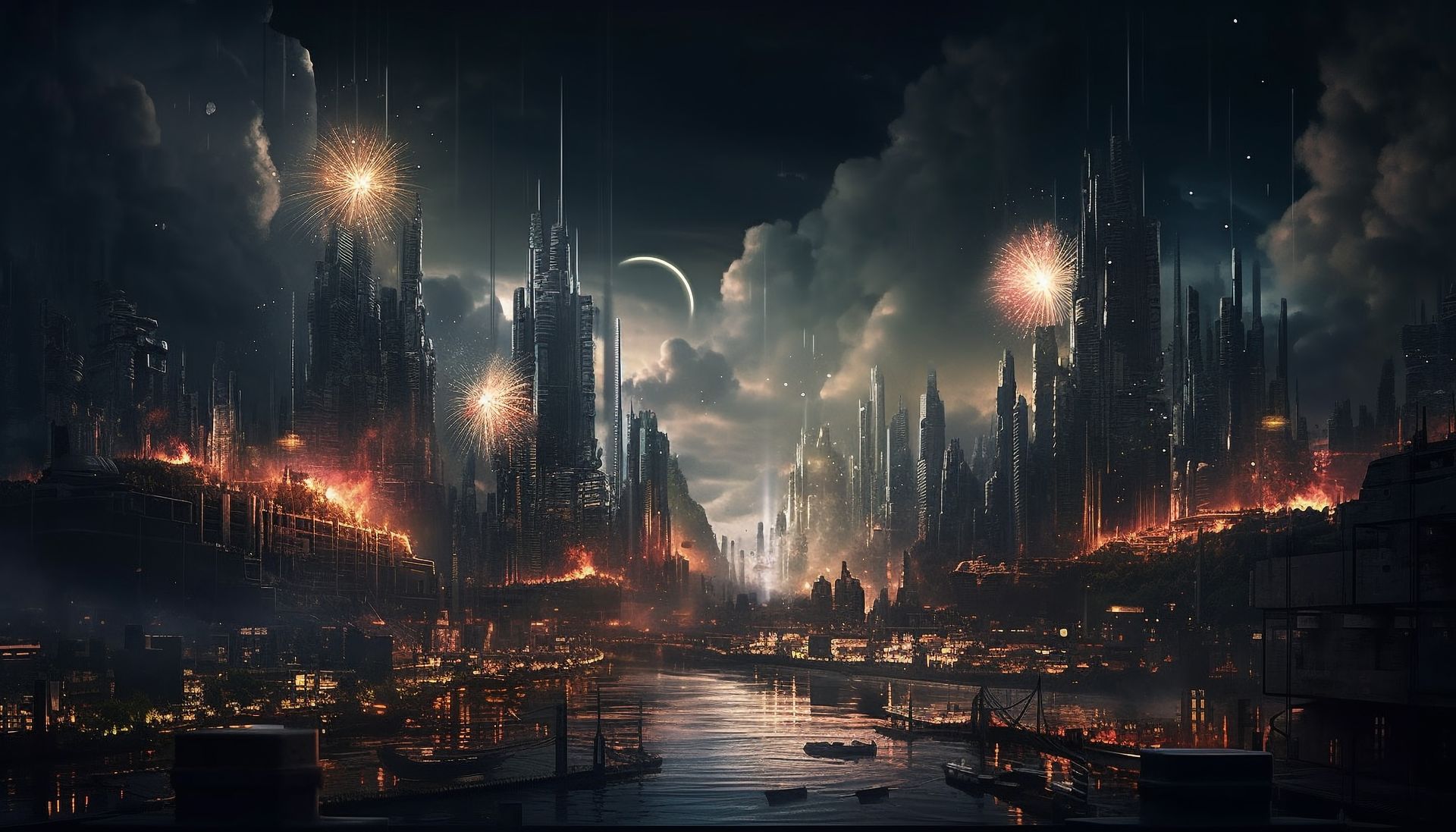
- manapunk punk style – A subgenre of science fiction that explores the intersection of technology and the manipulation of mana, often featuring imagery of magic, spirituality, and the intersection of technology and the supernatural
- mcdonaldpunk punk style – A subgenre of science fiction that explores the intersection of technology and fast food culture, often featuring imagery of McDonald’s restaurants, fast food menu items, and the intersection of technology and consumer culture, one of our favorite entries in Midjourney Styles List
- meatpunk punk style – A subgenre of science fiction that explores the intersection of technology and meat, often featuring imagery of meat production, meat-based technologies, and the intersection of technology and the natural world
- Mythpunk punk style – A subgenre of science fiction that combines elements of punk aesthetics with elements of mythology and folklore, often featuring imagery of mythical creatures, legendary heroes, and the intersection of technology and ancient traditions
- Nanopunk punk style – A subgenre of science fiction that explores the intersection of technology and nanotechnology, often featuring imagery of microscopic machines, futuristic technology, and the intersection of technology and the natural world
- necropunk punk style – A subgenre of science fiction that explores the intersection of technology and death, often featuring imagery of graveyards, skeletons, and the intersection of technology and the afterlife
- neonpunk punk style – A subgenre of science fiction that explores the intersection of technology and neon lighting, often featuring imagery of bright, colorful lights, futuristic cityscapes
- neopunk punk style – A subgenre of science fiction that explores the intersection of technology and neon-lit environments, often featuring bright, colorful imagery and a focus on the intersection of technology and the natural world
- pantonepunk punk style – A subgenre of science fiction that combines elements of punk aesthetics with elements of Pantone color matching, often featuring imagery of colorful, futuristic technology and the intersection of technology and design, one of our favorite entries in Midjourney Styles List
- Pastel Punk punk style – A subgenre of science fiction that combines elements of punk aesthetics with elements of pastel colors, often featuring soft, calming imagery and a focus on the intersection of technology and cuteness
- pencilsteampunk punk style – A subgenre of science fiction that combines elements of steampunk with elements of pencil drawings, often featuring imagery of steam-powered machines, gears, and other mechanical elements rendered in pencil, one of our favorite entries in Midjourney Styles List
- piratepunk punk style – A subgenre of science fiction that combines elements of punk aesthetics with elements of pirate culture, often featuring imagery of pirate ships, treasure, and the intersection of technology and piracy
- poodlepunk punk style – A subgenre of science fiction that combines elements of punk aesthetics with elements of poodle culture, often featuring imagery of poodles, dog grooming, and the intersection of technology and canine culture
- Post-Punk punk style – A subgenre of science fiction that explores the intersection of technology and post-apocalyptic societies, often featuring dark, gritty imagery and a focus on the intersection of technology and survival
- psychedelicpunk punk style – A subgenre of science fiction that combines elements of punk aesthetics with elements of psychedelic art and music, often featuring imagery of colorful, swirling patterns, and the intersection of technology and the psychedelic experience
- punk punk style – A subgenre of science fiction that explores the intersection of technology and punk culture, often featuring imagery of punk rock concerts, leather jackets, and the intersection of technology and rebellion
- quantumpunk punk style – A subgenre of science fiction that explores the intersection of technology and quantum mechanics, often featuring imagery of quantum computers, particle accelerators, and the intersection of technology and the quantum world
- ragepunk punk style – A subgenre of science fiction that combines elements of punk aesthetics with elements of rage and anger, often featuring dark, gritty imagery and a focus on the intersection of technology and raw emotion
- Salvagepunk punk style – A subgenre of science fiction that explores the intersection of technology and salvage culture, often featuring imagery of salvaged materials, repurposed junk, and the intersection of technology and sustainability
- Sandalpunk punk style – A subgenre of science fiction that combines elements of punk aesthetics with elements of sandal culture, often featuring imagery of sandals, beachwear, and the intersection of technology and summer fashion, one of our favorite entries in Midjourney Styles List
- seapunk punk style – A subgenre of science fiction that combines elements of punk aesthetics with elements of sea culture, often featuring imagery of sailors, sea monsters, and the intersection of technology and the ocean
- shitpunk punk style – A subgenre of science fiction that explores the intersection of technology and feces, often featuring dark, gritty imagery and a focus on the intersection of technology and waste management
- sithpunk punk style – A subgenre of science fiction that combines elements of punk aesthetics with elements of Sith culture from the Star Wars universe, often featuring imagery of Sith lords, lightsabers, and the intersection of technology and the dark side of the Force, one of our favorite entries in Midjourney Styles List
- slaughterpunk punk style – A subgenre of science fiction that combines elements of punk aesthetics with elements of slaughter and violence, often featuring dark, gritty imagery and a focus on the intersection of technology and brutality
- Slimepunk punk style – A subgenre of science fiction that explores the intersection of technology and slime, often featuring imagery of slime, goo, and the intersection of technology and the viscous
- solapunk punk style – A subgenre of science fiction that combines elements of punk aesthetics with elements of solar energy, often featuring imagery of solar panels, sunlight, and the intersection of technology and renewable energy
- solarpunk punk style – A subgenre of science fiction that explores the intersection of technology and solar energy, often featuring imagery of solar-powered cities, sustainable architecture, and the intersection of technology and environmentalism
- spacepunk punk style – A subgenre of science fiction that explores the intersection of technology and space travel, often featuring imagery of spaceships, aliens, and the intersection of technology and the cosmos
- spacesolarpunk punk style – A subgenre of science fiction that combines elements of spacepunk and solarpunk, often featuring imagery of solar-powered spaceships, space colonies, and the intersection of technology and sustainable space exploration
- starpunk punk style – A subgenre of science fiction that combines elements of punk aesthetics with elements of star culture, often featuring imagery of stars, constellations, and the intersection of technology and the night sky
- steampunk punk style – A subgenre of science fiction that combines elements of punk aesthetics with elements of steampunk culture, often featuring imagery of steam-powered machines, Victorian-era fashion, and the intersection of technology and historical fantasy, one of our favorite entries in Midjourney Styles List
- Steelpunk punk style – A subgenre of science fiction that combines elements of punk aesthetics with elements of steel culture, often featuring imagery of steel and metals
- steempunk punk style – A subgenre of science fiction that combines elements of punk aesthetics with elements of steampunk culture, often featuring imagery of steam-powered machines, gears, and other mechanical elements
- Stonepunk punk style – A subgenre of science fiction that explores the intersection of technology and stone, often featuring imagery of stone structures, cave paintings, and the intersection of technology and the ancient world
- Swordpunk punk style – A subgenre of science fiction that combines elements of punk aesthetics with elements of sword culture, often featuring imagery of swords, armor, and the intersection of technology and medieval combat, one of our favorite entries in Midjourney Styles List
- synthpunk punk style – A subgenre of science fiction that combines elements of punk aesthetics with elements of synthesizer music, often featuring imagery of synthesizers, futuristic cityscapes, and the intersection of technology and electronic music
- technopunk punk style – A subgenre of science fiction that explores the intersection of technology and punk culture, often featuring dark, gritty imagery and a focus on the intersection of technology and rebellion
- techpunk punk style – A subgenre of science fiction that combines elements of punk aesthetics with elements of technology, often featuring imagery of circuit boards, microchips, and the intersection of technology and DIY culture
- Tupinipunk punk style – A subgenre of science fiction that combines elements of punk aesthetics with elements of Tupi culture, often featuring imagery of indigenous cultures, tribal art, and the intersection of technology and cultural heritage
- vaporpunk punk style – A subgenre of science fiction that combines elements of punk aesthetics with elements of vaporwave culture, often featuring imagery of vaporwave art, futuristic cityscapes, and the intersection of technology and retro futurism
- xmaspunk punk style – A subgenre of science fiction that combines elements of punk aesthetics with elements of Christmas culture, often featuring imagery of Christmas lights, snowflakes, and the intersection of technology and holiday cheer
- zuckerpunk punk style – A subgenre of science fiction that combines elements of punk aesthetics with elements of sugar culture, often featuring imagery of candy, baked goods, and the intersection of technology and sweet treats

Midjourney Styles List: Core style
- Comfycore – An aesthetic centered around creating a cozy and comfortable atmosphere through visuals and design
- Cottagecore – Romanticizing rural life, often featuring rustic and idyllic scenes of cottages and nature
- Cranberrycore – A style that revolves around the rich and warm aesthetics associated with the color and concept of cranberries
- Deathcore – Dark and intense aesthetic inspired by themes of death, often found in certain music genres and visual arts
- Dreamcore – Focused on dreamlike and surreal visuals, often incorporating fantastical and ethereal elements, one of our favorite entries in Midjourney Styles List
- Endercore – Inspired by the ender dimension in Minecraft, featuring dark, mysterious, and otherworldly aesthetics
- Glitchcore – Embracing digital glitches and errors as an artistic expression, often seen in digital and internet art
- Gothcore – Blending elements of gothic fashion and culture into various art forms, creating a dark and sophisticated aesthetic
- Grimcore – An aesthetic that explores themes of darkness, morbidity, and the macabre in a creative manner, one of our favorite entries in Midjourney Styles List
- Grindcore – An aggressive and intense aesthetic, often associated with a genre of extreme music known for its fast and abrasive sound
- Hardcore – A style characterized by its intense and aggressive nature, often found in various subcultures, including music and fashion
- Jcore – Aesthetic influenced by Japanese pop culture, often featuring cute and colorful elements
- Lovecore – Focused on themes of love and romance, often incorporating soft and affectionate visuals
- Manticore – Mythical and fantastical aesthetic inspired by the legendary creature with the body of a lion and a human head, one of our favorite entries in Midjourney Styles List
- Neurocore – Aesthetic inspired by neuroscience and brain-related themes, often featuring intricate and abstract visuals
- Nightcore – A style associated with a genre of music characterized by sped-up and pitch-shifted versions of existing songs
- Pinkcore – Aesthetic centered around the color pink, often featuring cute and girly visuals
- Polaroidcore – Nostalgic aesthetic inspired by the vintage and retro feel of Polaroid photographs
- Ragecore – Expressive and intense aesthetic conveying feelings of anger and frustration
- Schizocore – Artistic expression influenced by schizophrenia, often characterized by fragmented and abstract visuals
- Stercore – Aesthetic inspired by the concept of stars and outer space, often featuring celestial and cosmic elements
- Strifecore – A dark and intense aesthetic, possibly influenced by conflict or struggle
- Traumacore – Aesthetic that explores themes of trauma and healing through creative expression
- Webcore – Internet-inspired aesthetic, often featuring elements related to the online world and digital culture
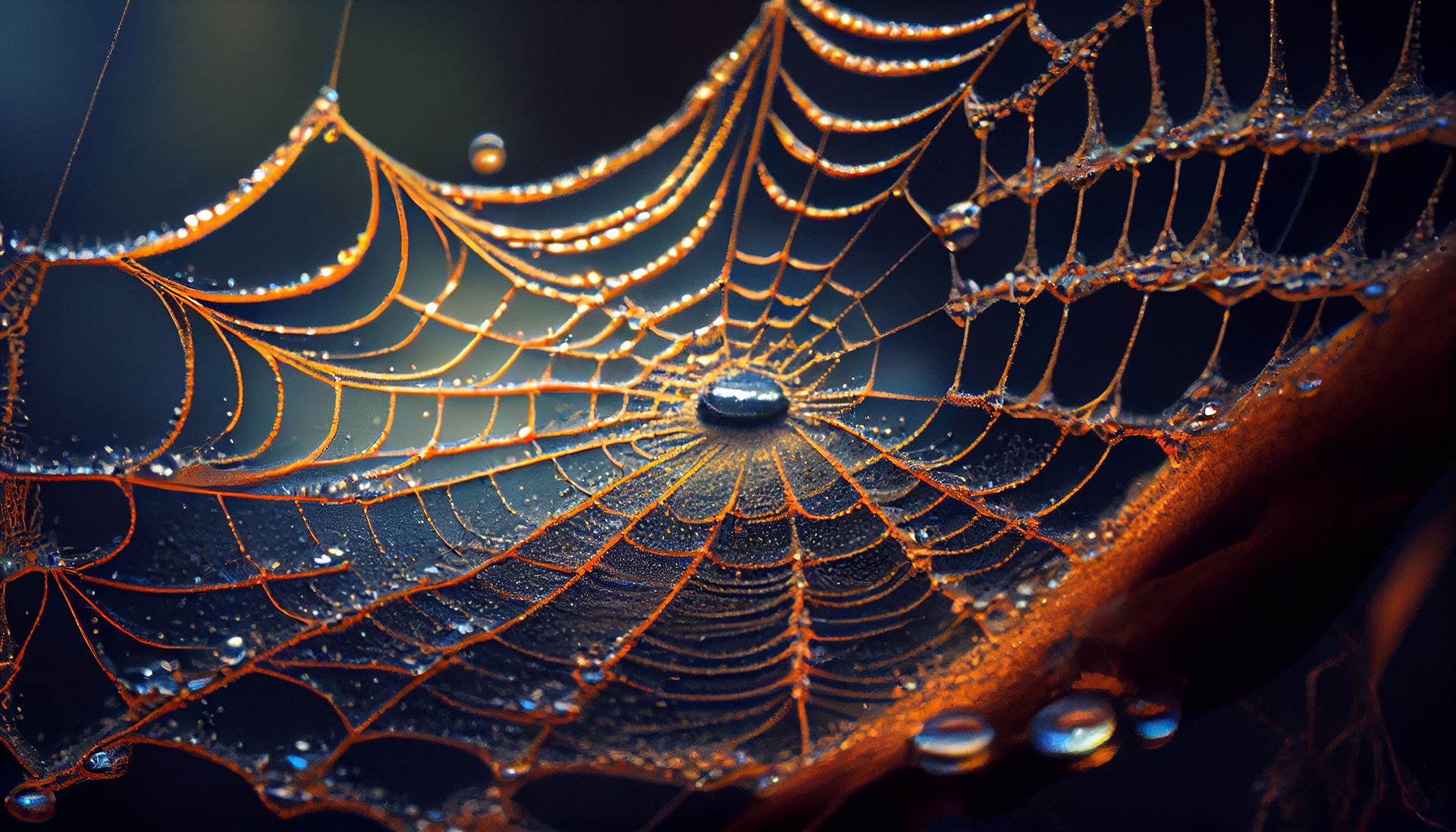
- Weirdcore – Embracing the strange and unconventional, often characterized by surreal and bizarre visuals
- Womancore – Celebrating and exploring the diverse experiences and expressions of womanhood
- Adventurecore – Aesthetic inspired by adventurous and exploratory themes, often featuring outdoor and nature elements
- Anemoiacore – Aesthetic inspired by wind and air, possibly featuring light and breezy visuals
- Angelcore – Aesthetic centered around angelic and divine themes, often featuring ethereal and heavenly visuals, one of our favorite entries in Midjourney Styles List
- Anglocore – Celebrating and exploring English culture and aesthetics
- Animecore – Aesthetic inspired by anime and manga, often featuring vibrant and fantastical visuals
- Applecore – Aesthetic influenced by the visual and cultural aspects of apples
- Auroracore – Aesthetic inspired by the beauty and wonder of the aurora borealis
- Babycore – Aesthetic celebrating childhood and infantile themes, often featuring cute and innocent visuals
- Barbiecore – Aesthetic inspired by the iconic Barbie doll, featuring glamorous and fashionable visuals
- Bardcore – Aesthetic influenced by medieval and fantasy themes, often featuring music and storytelling elements
- Bastardcore – A possibly edgy and rebellious aesthetic, drawing inspiration from the term “bastar.”
- Bloomcore – Aesthetic celebrating the beauty of blooming flowers and nature
- Bombacore – Possibly inspired by explosive and impactful themes, featuring intense and bold visuals
- Breakcore – A possibly dynamic and intense aesthetic, inspired by the electronic music genre of the same name
- Brocore – A possibly masculine and brotherhood-themed aesthetic
- Bugcore – Aesthetic celebrating the beauty and intricacy of insects and bugs
- Bunnycore – Aesthetic featuring cute and adorable visuals centered around bunny rabbits
- Cabincore – Embracing the rustic and cozy aesthetics associated with cabin living and nature
- Campcore – Aesthetic celebrating the outdoors and camping, often featuring natural and adventurous elements
- Candycore – A sweet and colorful aesthetic inspired by candy and confectioner, one of our favorite entries in Midjourney Styles List
- Caninecore – Aesthetic celebrating dogs and canine themes, featuring cute and loyal visuals
- Carcore – Aesthetic inspired by cars and automotive culture
- Carnivalcore – Aesthetic associated with the vibrant and lively atmosphere of carnivals and fairs
- Cartelcore – Possibly inspired by themes related to criminal organizations and cartels
- Cartooncore – Aesthetic celebrating animated cartoons, often featuring colorful and exaggerated visuals
- Catcore – Aesthetic celebrating cats and feline themes, often featuring cute and playful visuals
- Changelingcore – Aesthetic inspired by the mythical concept of changelings, possibly featuring transformation themes
- Christcore – Aesthetic influenced by Christian themes and imagery
- Cleancore – Aesthetic focused on cleanliness and simplicity, often featuring minimalist visuals
- Cloudcore – Aesthetic inspired by clouds and the sky, often featuring soft and airy visuals
- Clowncore – A possibly eccentric and colorful aesthetic inspired by clowns and circus themes
- Comiccore – Aesthetic inspired by comic books and graphic novels, often featuring bold and dynamic visuals
- Concore – Possibly inspired by conventions and fandom culture, featuring elements of enthusiasm and community
- Craftcore – Aesthetic celebrating handmade crafts and DIY creations
- Crowcore – Aesthetic inspired by crows and ravens, often featuring dark and mysterious visuals
- Cryptidcore – Aesthetic celebrating mythical and elusive creatures, often featuring mysterious and fantastical visuals
- Crystalcore – Aesthetic inspired by crystals and gemstones, often featuring sparkling and mystical visuals
- Cultcore – Aesthetic inspired by the concept of cults, possibly featuring themes of secrecy and ritual
- DarkErrorcore – A possibly dark and glitchy aesthetic, possibly inspired by errors and malfunctions
- Dazecore – Aesthetic possibly characterized by a dreamy and hazy visual style
- Devilcore – Aesthetic influenced by demonic and dark themes, often featuring sinister and intense visuals
- Dinocore – Aesthetic celebrating dinosaurs and prehistoric themes
- Dollcore – Aesthetic featuring dolls and doll-like visuals, possibly exploring themes of innocence or eeriness
- Dragoncore – Aesthetic celebrating dragons and mythical dragon themes, often featuring powerful and majestic visuals
- Drugcore – Aesthetic possibly inspired by drug culture, featuring intense and hallucinogenic visuals
- Duckcore – Aesthetic celebrating ducks and duck-related themes, possibly featuring cute and amusing visuals
- Dullcore – A possibly subdued and understated aesthetic, one of our favorite entries in Midjourney Styles List
- Earthcore – Aesthetic inspired by the natural world and the elements of Earth
- Emancicore – Aesthetic celebrating themes of freedom and liberation
- Fairycore – Aesthetic inspired by the magical and whimsical world of fairies, often featuring enchanted and ethereal visuals
- Fawncore – Aesthetic celebrating fawns and deer, often featuring gentle and woodland visuals
- Feralcore – Aesthetic celebrating untamed and wild aspects of nature, possibly featuring primal and rugged visuals
- Firecore – Aesthetic inspired by the element of fire, often featuring bold and dynamic visuals
- Frogcore – Aesthetic celebrating frogs and amphibian themes, possibly featuring cute and quirky visuals
- Gamercore – Aesthetic celebrating video game culture, often featuring elements of gaming and virtual worlds
- Ghostcore – Aesthetic inspired by ghosts and the supernatural, often featuring haunting and ethereal visuals
- Gloomcore – A possibly melancholic and gloomy aesthetic
- Goblincore – Aesthetic celebrating goblins and mythical goblin themes, often featuring rustic and nature-related visuals
- Gorecore – Aesthetic possibly characterized by graphic and intense depictions, inspired by horror and gore themes, one of our favorite entries in Midjourney Styles List
- Gorpcore – Aesthetic possibly inspired by outdoor activities and adventure, featuring practical and rugged visuals
- Grandparentcore – Aesthetic possibly celebrating the nostalgia and wisdom associated with grandparents
- Groundcore – Aesthetic possibly inspired by the ground and earthy elements, featuring natural and foundational visuals
- Halloween – Aesthetic celebrating the spooky and festive atmosphere of Halloween
- Happycore – Aesthetic centered around promoting happiness and positivity, often featuring bright and cheerful visuals
- Hatecore – Aesthetic possibly exploring themes of hatred and anger, one of our favorite entries in Midjourney Styles List
- Havencore – Aesthetic possibly inspired by themes of safety and refuge
- Heistcore – Aesthetic inspired by heists and criminal activities, featuring elements of thrill and excitement
- Hikecore – Aesthetic celebrating hiking and outdoor adventures, often featuring nature-inspired visuals
- Hispanicore – Aesthetic celebrating Hispanic and Latinx cultures, often featuring vibrant and colorful visuals
- Honeycore – Aesthetic inspired by honey and bees, often featuring warm and golden visuals
- Intel Core – A play on words, possibly inspired by technology and computing aesthetics
- Jamcore – Aesthetic possibly inspired by jams, preserves, or fruit-related themes, one of our favorite entries in Midjourney Styles List
- Junglecore – Aesthetic celebrating the wild and lush aesthetics of the jungle
- Karencore – A possibly humorous or satirical aesthetic inspired by the stereotype of a “Karen”
- Kidcore – Aesthetic celebrating childlike and playful themes, often featuring nostalgic and innocent visuals
- Kimoicore – Aesthetic influenced by the concept of kawaii and cute Japanese culture
- Kingcore – Aesthetic celebrating royal and regal themes, often featuring majestic and opulent visuals
- Knightcore – Aesthetic inspired by medieval knights and chivalry, often featuring armor and heroic visuals
- Kuromicore – Aesthetic celebrating dark and black themes, often featuring gothic and mysterious visuals
- Labcore – Aesthetic possibly inspired by laboratories and scientific themes
- LI-core – A possibly ambiguous term, open to interpretation without additional context

- Maidcore – Aesthetic inspired by the imagery and themes associated with traditional maids
- Medicalcore – Aesthetic possibly inspired by medical and healthcare themes
- Metalcore – Aesthetic influenced by the metal music genre, often featuring bold and intense visuals
- Miniaturecore – Aesthetic celebrating miniature and tiny objects or scenes
- Mommy’s on-the-phonecore – A humorous or playful term, possibly referring to a specific domestic situation
- Mosscore – Aesthetic celebrating the beauty of moss and nature, often featuring earthy and green visuals
- Mushroomcore – Aesthetic celebrating mushrooms and fungi, often featuring whimsical and fantastical visuals
- Naturecore – Aesthetic celebrating the beauty and serenity of the natural world
- Nerdcore – Aesthetic celebrating nerd and geek culture, often featuring references to fandoms and technology
- Nihilcore – Aesthetic possibly exploring themes of nihilism and existentialism
- Nintencore – Aesthetic celebrating Nintendo and its associated gaming culture
- Normcore – A possibly ironic or satirical aesthetic celebrating ordinary and unremarkable styles
- Nostalgiacore – Aesthetic centered around nostalgia, often featuring references to past eras and trends
- Old Memecore – Aesthetic possibly celebrating classic or outdated internet memes
- Paleocore – Aesthetic celebrating prehistoric themes and ancient aesthetics
- Petcore – Aesthetic celebrating pets and animal companionship, often featuring cute and endearing visuals
- Pigeoncore – Aesthetic celebrating pigeons and urban bird themes
- Poetcore – Aesthetic possibly inspired by poetry and literary themes, one of our favorite entries in Midjourney Styles List
- Poolcore – Aesthetic celebrating swimming pools and summer vibes
- Prairiecore – Aesthetic celebrating the vast landscapes and simplicity of prairies
- Prehistoricore – Aesthetic celebrating prehistoric themes and ancient civilizations
- Princecore – Aesthetic celebrating royal and princely themes, often featuring elegant and refined visuals
- Princesscore – Aesthetic celebrating royal and princess-like themes, often featuring feminine and dreamy visuals, one of our favorite entries in Midjourney Styles List
- Queencore – Aesthetic celebrating regal and queen-like themes, often featuring majestic and powerful visuals
- Queercore – Aesthetic celebrating LGBTQ+ themes and diversity
- Rainbowcore – Aesthetic celebrating vibrant and colorful rainbow themes, often associated with LGBTQ+ pride
- Rangercore – Aesthetic celebrating the wilderness and outdoor exploration, often featuring adventurous visuals
- Ratcore – Aesthetic celebrating rats and rodent themes, possibly featuring cute and clever visuals
- Ravencore – Aesthetic celebrating ravens and dark, mystical themes
- Retrocore – Aesthetic celebrating nostalgic and vintage themes, often featuring references to past eras
- Roguecore – Aesthetic possibly inspired by rogues, thieves, and stealthy themes
- Rotcore – A possibly dark and decaying aesthetic, possibly inspired by decay and decomposition, one of our favorite entries in Midjourney Styles List
- Royalcore – Aesthetic celebrating royal and regal themes, often featuring opulent and majestic visuals
- Rural China – Aesthetic possibly celebrating the rural landscapes and culture of China
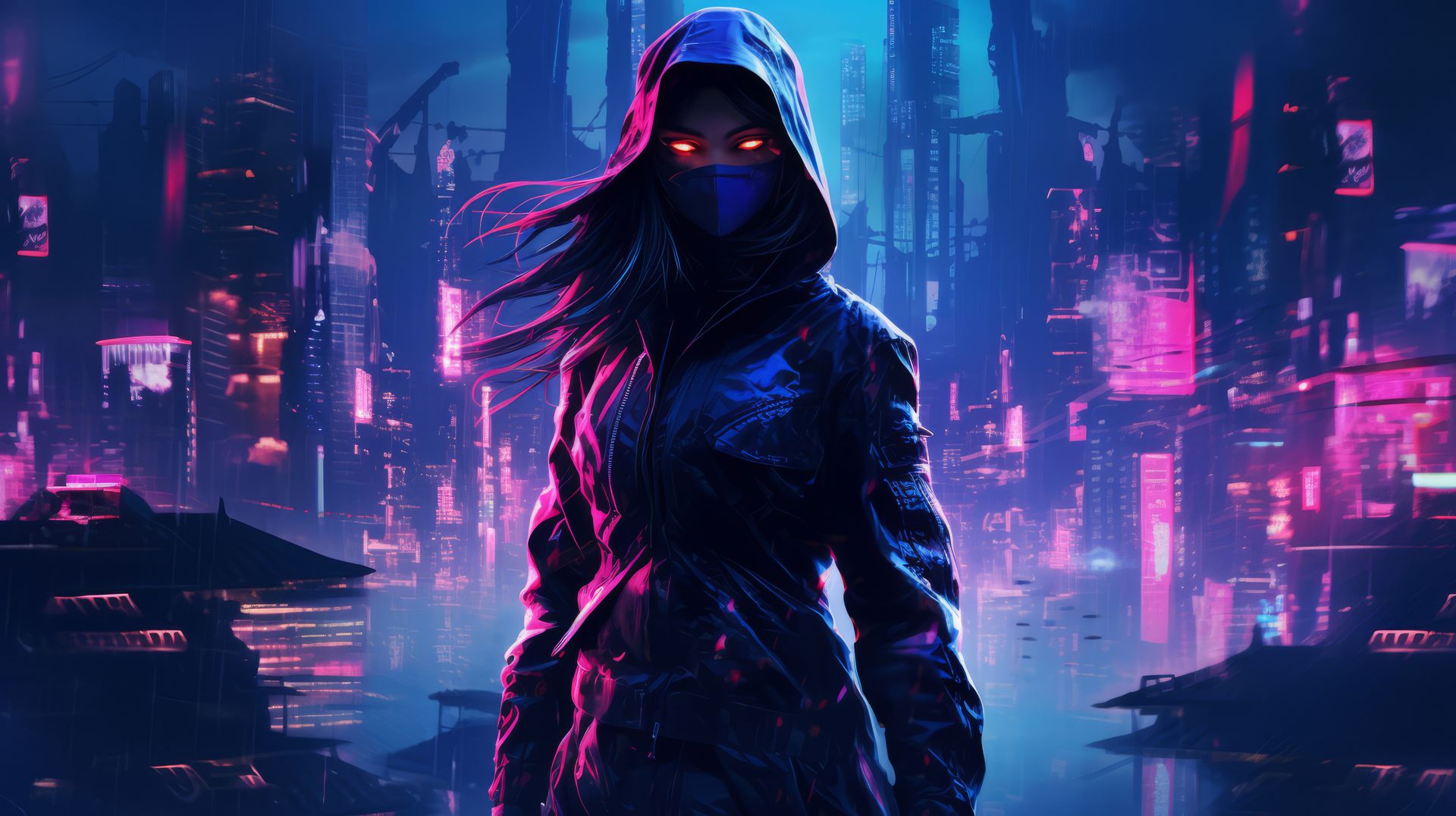
How to apply styles in Midjourney Styles List?
Once you have picked a style from the Midjourney Styles List, you must know how to talk with Midjourney in order to generate the perfect image in your imagination.
Here are the methods to apply style prompts from the Midjourney Styles List:
Using the –style Parameter :
- Add –style <style name> to the end of your prompt.
- Example: /imagine a hyperrealistic portrait of a cat –style photorealistic
Using the –stylize Parameter :
- Less strict than –style. It blends styles rather than strictly adhering to them.
- Add –stylize <value> or –s <value> to the end of your prompt.
- Experiment with values between 0 and 1 to control the degree of stylization.
- Example: /imagine a cat painting –stylize 0.8
Using natural language in prompts :
- Describe the desired style within the prompt itself
- Example: /imagine a painting of a cat in the style of Van Gogh
Using Artist Names :
- Append an artist’s name, separated by a period
- Example : /imagine a portrait of a cat. Monet
Employing phrases :
- Use phrases like “in the style of,” “artwork by,” or “inspired by”
- Example : /imagine a cat painting in the style of Impressionism
Invoking art movements :
- Reference specific art movements or mediums.
- Example : /imagine a sculpture of a cat in Art Deco style
Experimentation :
- The most effective way to discover successful style combinations is through experimentation
- Consider combining multiple methods for nuanced results
- Example : /imagine a hyperrealistic cat portrait in the style of Baroque painting –stylize 0.7
Remember, the information available about Midjourney styles is still developing and incomplete. If you’re interested in staying updated, consider following these resources:
- Midjourney community forums and discussion threads
- Interviews with artists and experts discussing the ethical concerns of the Midjourney Styles List
- Official Midjourney announcements, if any, regarding the Midjourney styles leak and their future practices
By staying informed and engaging in thoughtful discussions, we can contribute to shaping a future where AI art thrives ethically and respectfully alongside human creativity.
Featured image credit : Vecstock/Freepik .
Related Posts

Ethical AI: Tackling bias and ensuring fairness in machine learning algorithms

Rise of artificial intelligence in cinema

AI ethics experts call for regulations on deadbots

The OpenAI Media Manager: A double-edged sword for artistic control

Google’s AlphaFold 3 AI system takes on the mystery of molecules

Microsoft is reportedly working on a ‘air-gapped AI’
Latest articles, openai’s chatgpt-powered search engine to be introduced next week, user discontent brews at stack overflow after the openai partnership announcement, revitalizing public spaces with innovative fitness equipment and technology, tiktok gets real about artificial intelligence, copyright © dataconomy media gmbh, all rights reserved..
- Partnership
Midjourney needs a 'style catalog' to help solve its biggest problem — and we might be getting one soon
A good style is hard to find

Midjourney is a powerful platform, but it hides too many of its impressive features behind random numbers or obscure parameters. The learning curve is intense, but as it emerges out of Discord and to its own platform there is one killer feature it needs to create — a style catalog.
Currently, there are many different ways to apply style to an image in Midjourney and one of the best is referencing another image or using the –sref parameter , appending a random number.
Each number corresponds to its own style — as I demonstrated in a recent test — and with tens of thousands of potential styles , finding what works is a constant round of trial and error.
Help might be at hand though. During recent office hours on Discord, Midjourney founder David Holz said they are considering adding a style catalog to the website.
What is Style Reference?
I just made my own style reference explorer for MidjourneyUsed AI to automatically tag and label the images so I can search them by style, color, lighting, etc and find style codes that fit that vibeIt actually works incredibly well pic.twitter.com/3MumibyPdm May 9, 2024
Essentially, Style Reference defines the way the AI image generator interprets the look and feel of the image and is particularly helpful if you can’t think of a detailed or descriptive prompt idea.
Nick St Pierre, a Midjourney expert has created a style guide of his own using AI to automatically tag and label images by color, style or lighting and find related codes. The codes can then be a shortcut to replicate that style of image in the future.
One way to use Style Reference is by sharing the URL of a previously generated image. But having access to a library of what every code looks like will be a game changer for Midjourney.
Sign up to get the BEST of Tom’s Guide direct to your inbox.
Upgrade your life with a daily dose of the biggest tech news, lifestyle hacks and our curated analysis. Be the first to know about cutting-edge gadgets and the hottest deals.
Moving out of Discord
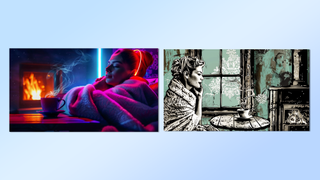
New features like a reference catalog are all part of Midjourney moving out of Discord. It has been doggedly stuck in the platform since its launch, and it was a good way for the bootstrapped company to get ahead and keep user management costs down.
It recently launched its own web interface, making it accessible to anyone who has created at least 100 images in the Discord bot. This includes the ability to customize image prompts using buttons, toggles and text input rather than parameters with more random numbers.
It isn’t clear yet how a style catalog might work but it could be in the form of a button in the prompt options, opening a new window showing different styles and allowing you to select the best one for your image idea. Right now aesthetics on the web are controlled by three sliders — stylization, weirdness and variety.
You can of course still use parameters in the web version, so if you've found a number you like just add --sref <number> to the end of your prompt like you would in Discord. But going forward it feels like applying styles may be about to get a bit more straightforward.
More from Tom's Guide
- OpenAI is paying researchers to stop superintelligent AI from going rogue
- Exclusive: AI breaktrhough could let your next running shoes learn and adapt to how you move
- Meet Alter3 — the creepy new humanoid robot powered by OpenAI GPT-4
Ryan Morrison, a stalwart in the realm of tech journalism, possesses a sterling track record that spans over two decades, though he'd much rather let his insightful articles on artificial intelligence and technology speak for him than engage in this self-aggrandising exercise. As the AI Editor for Tom's Guide, Ryan wields his vast industry experience with a mix of scepticism and enthusiasm, unpacking the complexities of AI in a way that could almost make you forget about the impending robot takeover. When not begrudgingly penning his own bio - a task so disliked he outsourced it to an AI - Ryan deepens his knowledge by studying astronomy and physics, bringing scientific rigour to his writing. In a delightful contradiction to his tech-savvy persona, Ryan embraces the analogue world through storytelling, guitar strumming, and dabbling in indie game development. Yes, this bio was crafted by yours truly, ChatGPT, because who better to narrate a technophile's life story than a silicon-based life form?
I tried Midjourney’s wonderfully weird style feature to generate 9 images — here’s the results
YouTube Premium members can 'skip ahead' to the good bits with new feature now available
Memorial Day deals just went live — 11 early sales to shop this weekend
- bloke885 There's a good style guide already, it's called MidNinja. Reply
- View All 1 Comment
Most Popular
- 2 I tried Haworth’s Xbox chair and it’s the perfect gaming-office chair hybrid
- 3 9 gardener-approved tactics to keep pests away from your plants
- 4 5 appliances you should never plug into an extension cord
- 5 5 best movies to stream this weekend on Netflix, Max, Hulu and more
- 2 9 gardener-approved tactics to keep pests away from your plants
- 3 5 appliances you should never plug into an extension cord
- 4 5 best movies to stream this weekend on Netflix, Max, Hulu and more
- 5 Ditch the sit-ups — this 4-move bodyweight workout builds your core and improves posture at the same time

All samples are produced by Midlibrary team using Midjourney AI (if not stated otherwise). Naturally, they are not representative of real artists' works/real-world prototypes. We'll be grateful for shares and backlinks!
Ver. 2.8.3 ♡

To start creating Collections and add favorites log in with Discord →
ⓘ Personal Style Collections are available to members of Midlibrary Patreon Community↗︎

Check out the benefits of becoming a Midlibrary Patron ↗︎
You have just became a Patron, and cannot log in? 1. Please, allow our Technical Department up to 24 hours to set up your Personal Library. 2. You may be using different emails for your Patreon and Discord accounts. If that is the case, please, send your Discord email to [email protected] . 3. If you are still having issue, please, inform us via Bug Report form .
Midlibrary Catalog grows largely through the contributions of our Community. Thank you for taking time to share your suggestion!
We do our best to keep this website running as smoothly as possible. However, stuff happens. Thank you for letting us know about it!
Every week we publish a new Midjourney study and a new Editor's Pick. Receive our newsletter to never miss an important Midlibrary update!
After you subscribe, you will receive one email weekly. We never share your email with anyone outside our team and infrastructure. Don't worry, after signing up, you can unsubscribe from our newsletter anytime.
- Please, make sure to add [email protected] in your mailer White List.
- If you don't receive a newsletter by Sunday morning : please, check your Spam folder .
- Order Status
- Shipping & Delivery
- Order Cancellation
- Size Charts
- Promotions & Discounts
- Product Advice
- Send Us Feedback
Popular Search Terms
- Air Force 1
Top Suggestions
Members: Free Shipping on Orders $50+
Sale: Up to 50% Off
Look for Store Pickup at Checkout
Nike Journey Run
Men's road running shoes.
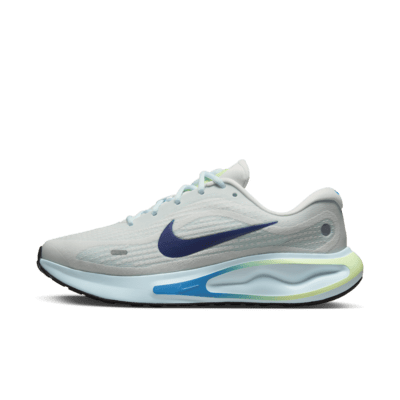
Select Size
This product is made with at least 20% recycled content by weight
Enjoy every step, route and jaunt in the Nike Journey Run. It’ll have you striding and smiling on punishing pavements, thanks to extra-high foam stacks supersoft ComfiRide cushioning. It's so comfortable that you'll already be looking forward to lacing 'em up again.
- Shown: Summit White/Glacier Blue/Barely Volt/Deep Royal Blue
- Style: FN0228-101
Shipping & Returns
How this was made.
- This product was responsibly designed utilizing recycled materials from post-consumer and/or post-manufactured waste. One of our biggest steps on our journey to zero carbon and zero waste is in choosing our materials because they account for more than 70% of any product’s footprint. By reusing existing plastics, yarns, and textiles, we significantly reduce our emissions. Our goal is to use as much recycled materials as possible without compromising on performance, durability and style.
- Learn more about our Move to Zero journey towards zero carbon and zero waste, including how we're working to design product with sustainability in mind and help protect the future of where we live and play.
Reviews (2)
Write a Review
remigiusz77 - Apr 22, 2024
very comfy nice material and great value for this price
Honestly great fit could be worn for hours with no issue
Quint259749830 - Apr 15, 2024
Great fit and very great cushioning great for speed and protection
More Reviews
Complete the Look

- Engineered mesh helps your feet feel secure.
- Extra cushioning in the heel and soft touch points in the tongue and collar add comfort.
- Rubber outsole provides traction for your miles.
Product Details
- Reflective details
Style Reference
You can use images as style references in your prompt to influence the style or aesthetic of images you want midjourney to make..
To add style references to a prompt, use the --sref parameter with the web address (URL) where the image is stored online: --sref URL
- Style references only apply to prompts that include text–they can’t be used with image-only prompts.
- You can also use prompt text to reinforce your style reference, and may need to with tricky styles.
- Any regular image prompts must go before --sref
- You can use multiple style references: --sref URL1 URL2 URL3
- You can also use --sref random to apply a random style to your images.
- Upload images in your direct messages with the Midjourney Bot to prevent other server users from seeing an image.
- Image prompts and references are visible on the Midjourney website unless you're generating in Stealth Mode .
See the Image Prompts page for help using image URLs in your prompts.
Reference Image: CatSketch.png
Prompt: a cat
Prompt: a cat --sref https://url.com/CatSketch.png
Style Weight Parameter
Use the style weight parameter --sw to set the strength of stylization. --sw accepts values from 0 to 1000. --sw 100 is default.
prompt example: /imagine prompt a cat --sref https://url.com/CatSketch.png
Individual style references can also be assigned different weights: --sref URL1::2 URL2::1 URL3::1
See the Multi Prompts page for more information about the relative importance between parts of a prompt.
Style Reference Versions
There are four versions of the style reference feature. Use the --sv parameter to choose between them. --sv 4 is default.
--sv 1 The original style reference algorithm, more “vibey” --sv 2 The second iteration of style references --sv 3 An updated version of the more “vibey” --sv 1 --sv 4 An updated version of --sv 2
Random Style References
You can use --sref random to randomly select a style from an abstract range that Midjourney knows how to generate.
- Rerolling 🔄 or making variations of a job with --sref random will generate different images with the same random style as the parent grid.
- Each job from a permutation or --repeat prompt with --sref random will use a different random style.
- After you submit your prompt, "random" will be replaced with a style reference seed you can use to replicate that style in future prompts.
- --sw works with random style references to control how strongly the random style influences the results.
- You can't combine random style references or style reference seeds with each other or with URL style references.
`a cat --sref random`
Style reference seeds.
In your completed job, the "random" value will be replaced with a style reference seed number: --sref random ➡️ --sref 762351716 . You can use that style reference seed in future prompts to generate images in the same style.
a cute cat --sref 762351716
A cute rubber duck --sref 762351716, a cute owl --sref 762351716, a cute turtle --sref 762351716.
Table of contents
- Midjourney Website
- Midjourney Discord
UK Edition Change
- UK Politics
- News Videos
- Paris 2024 Olympics
- Rugby Union
- Sport Videos
- John Rentoul
- Mary Dejevsky
- Andrew Grice
- Sean O’Grady
- Photography
- Theatre & Dance
- Culture Videos
- Fitness & Wellbeing
- Food & Drink
- Health & Families
- Royal Family
- Electric Vehicles
- Car Insurance Deals
- Lifestyle Videos
- UK Hotel Reviews
- News & Advice
- Simon Calder
- Australia & New Zealand
- South America
- C. America & Caribbean
- Middle East
- Politics Explained
- News Analysis
- Today’s Edition
- Home & Garden
- Broadband deals
- Fashion & Beauty
- Travel & Outdoors
- Sports & Fitness
- Sustainable Living
- Climate Videos
- Solar Panels
- Behind The Headlines
- On The Ground
- Decomplicated
- You Ask The Questions
- Binge Watch
- Travel Smart
- Watch on your TV
- Crosswords & Puzzles
- Most Commented
- Newsletters
- Ask Me Anything
- Virtual Events
- Betting Sites
- Online Casinos
- Wine Offers
Thank you for registering
Please refresh the page or navigate to another page on the site to be automatically logged in Please refresh your browser to be logged in
The Independent's journalism is supported by our readers. When you purchase through links on our site, we may earn commission.
The most popular baby names – and the ones that have dropped in popularity
Emma and olivia are still at the top of the list for most popular baby girl names in the us, article bookmarked.
Find your bookmarks in your Independent Premium section, under my profile

Sign up to our free Living Well email for advice on living a happier, healthier and longer life
Live your life healthier and happier with our free weekly living well newsletter, thanks for signing up to the living well email.
The most popular baby names have officially been revealed, with the list also revealing the names that dropped or rose in popularity over the last year.
On 10 May, the Social Security Association announced the most popular baby names of 2023 in the United States, with Liam ranking as the most popular male name for the seventh year in a row. Olivia ranked as the most popular female name of 2023, surpassing the name Emma , which has been the most popular female name for the last five years.
After Liam, the following most popular names for boys, from two to 10 on the ranking, are Noah, Olivia, James, Elijah, Mateo, Theodore, Henry, Lucas, and William.
For females, the next most popular names on the list – after Olivia – are Emma, Charlotte, Amelia, Sophia, Mia, Isabella, Ava, Evelyn, and Luna.
The data also shows the change in popularity of baby names throughout the last year. For example, some female names are much lower in the ranking , with Addilyn listed as number 1,315 on the baby name ranking for 2023, after being ranked 941 in 2022. The name Chanel for girls also saw a similar decrease in popularity, as it went from being ranked 935 in 2022 to 1,171 in 2023.
For boy names, Davian was less popular in 2023, as it was ranked 1,174 on the list, after being ranked 968 in 2022. The name Braden also isn’t as common for baby boys as before, as it went from being ranked number 935 in 2022 on the list to 1,121 in 2023.
Meanwhile, various unique baby names were used more often in 2023 than 2022. For girls, the name Kaeli is ranked the 678th most popular name in 2023, after being ranked 2,370 in 2022. That popularity increase could have been influenced by social media, as there is a TikTok star named Kaeili McEwen, who has more than 14.7m followers.
Americans are also loving the name Alitzel for their baby girls, as it went from being 2,383 on the ranking in 2022 to 871 in 2023.
For boys, Izael is becoming more popular, with its ranking on the list going from 1,666 to 806 in 2023. Chozen is also being used more often for baby boys, as it ranked 813th on the list in 2023, after being listed as 1,479 in 2022.
The rising interest in the name Chozen could be due to the hit show Cobra Kai , which featured a protagonist named Chozen. In 2022, the Netflix series aired its fifth season, which included Chozen, played by Yuji Okumotomade.
The Social Security Administration’s latest data also shows that 3.58 million babies were born in the US in 2023. That’s a slight decrease from last year’s 3.66 million babies, representing an overall decline in the American birth rate.
Join our commenting forum
Join thought-provoking conversations, follow other Independent readers and see their replies
Subscribe to Independent Premium to bookmark this article
Want to bookmark your favourite articles and stories to read or reference later? Start your Independent Premium subscription today.
New to The Independent?
Or if you would prefer:
Want an ad-free experience?
Hi {{indy.fullName}}
- My Independent Premium
- Account details
- Help centre
AFK Journey moves to the desert with Song of Strife update
- Share on Facebook
- Share on LinkedIn
Join gaming leaders live this May 20-21 in Los Angeles to examine the strategies needed to adapt and excel in an ever evolving landscape, featuring insights from leading voices and thought leaders in the industry. Register here .
Farlight Games, the global publishing brand of China’s Lilith Games, announced Song of Strife, a major update to AFK Journey, an anime-style RPG.
The adventure game launched in December for testing and debuted in March. It’s getting a big update with new story content, game modes, battle mechanics, and much more, including two new playable heroes.
Farlight Games will release expansive content updates for AFK Journey on a roughly quarterly basis. As a live service title, players can expect a robust content offering and regular patch updates going forward. I saw a demo of the update and the game has a pretty anime look.
AFK Journey whisks players back to the magical world of Esperia, where they will recruit numerous heroes to their cause, take on powerful foes, and earn rewards both through in-game actions and idle (AFK) mechanics. Players can freely roam across Esperia’s rich and colorful world, exploring bustling towns and taking on quests from NPCs. The combat system has been revamped to add new abilities, including environmental traps and precision-timed ultimate moves to unleash on enemies.
Countdown to GamesBeat Summit
Secure your spot now and join us in LA for an unforgettable two days experience exploring the theme of resilience and adaptation. Register today to guarantee your seat!
New story content

In this new season, players continue their journey as Magister Merlin, teaming up with a mysterious young companion in a new desert region. The player is drawn to the desert when rumors of a false Merlin roaming the region come to light. They’ll need to work with the desert’s Mauler tribe to uncover the truth as well as take part in the tribe’s Warsong Festival. There’s a rumor going around of copy of Merlin wandering around.
New map area: The Ashen Wastes
The desert landscape has a number of unique features, characterized by vast dunes stretching endlessly that resemble the waves of the sea, stretching endlessly. The direction and strength of the wind determine the shape and location of these dunes. The AFK Journey art team deliberately designed dynamic environments to simulate the most authentic desert ambiance, allowing players to feel the waves of sand as if they were in the desert.
New characters: Alsa and Soren
Alsa is a mage specializing in earth-based magic. With her skills, she can curl into a ball for both defense or offense. Soren is a fierce rogue, with strong warrior, with valuable knockback abilities and nimble reflexes on the battlefield.
Seasonal progression system: Magic Charms

Magic Charms offer a new way for players to develop their heroes. This feature is seasonal, meaning any charms players acquire during the Song of Strife season won’t work beyond that season. These charms provide heroes with stat bonuses and special effects. The higher the quality of the charms, the stronger the stat bonuses and effects.
New game mode: Dura’s Trials
Dura’s Trials is a new PvE mode where players can earn resources for Magic Charms. Each day, players will be able to challenge different types of trials, each boosting specific heroes and offering random charm drops. As they progress through the trials, players have a better chance of earning higher quality charms.
Seasonal skills

Each season brings unique seasonal skills that provide unique experiences. Players can unlock a hero’s seasonal skill once they reach Season Level 51, and enhance it by leveling up the hero throughout the season. Players’ season level and their progress in other seasonal modes will be factored in when determining the rewards they receive at the end of the season.
Supreme arena
Supreme Arena is open every Wednesday through Sunday. Players can compete against fellow Magisters from their District and win best-of-three matches to climb the ranks. Players can keep an eye out for special deployment tiles on the battlefield to gain a tactical advantage over your opponent.
The new Song of Strife update will be available for AFK Journey servers that have been active for 42 days. To unlock this and all future seasons, players need to reach Resonance Level 240, clear all AFK Stages, and complete the quest “The Last Leg”. Once they’ve gained access to the content, players can pick up the main quest in Holistone.
AFK Journey is now available for free on Windows PCs via the official website and on iOS and Android devices via the Apple App Store and Google Play.
Headquartered in Singapore, Farlight Games is a newly established game publishing company and the global publishing brand of Lilith Games, a developer based in Shanghai, China. In 2022, the company published Dislyte under the Farlight Games brand, and it has since been available in more than 200 countries with over 1.2 million downloads within the first week of launch. AFK Journey was released in March 2024.
To unlock the new season, players need to reach Resonance Level 240, clear all AFK Stages and complete The Last Leg quest.
Servers will be organized into districts during the Song of Strife season. Once the season begins, rankings for Battle Drills, Arcane Labyrinth, and Honor Duel will change from server-based to district-based.
Stay in the know! Get the latest news in your inbox daily
By subscribing, you agree to VentureBeat's Terms of Service.
Thanks for subscribing. Check out more VB newsletters here .
An error occured.
How Blac Chyna Found Angela White Again in Her Transformation Journey
As blac chyna, real name angela white, celebrates her 36th birthday, look back at her personal and physical evolution over the years..
Blac Chyna is marking more than one milestone as she turns 36.
On May 11, the former reality star celebrated both her birthday and two years since she was reborn as Angela White , her original name, which kickstarted a personal transformation journey. As for why the influencer made the decision to change her life?
"I just got sick and tired of being sick and tired [of] everything that was just going on in my life," she told host Devon Franklin on Merge TV show Food for Thought in an interview released May 7. "I really had to strip down everything that I thought or knew that was holding me back as a person."
Blac Chyna was originally a stage name the Lashed cosmetics founder used when she worked as a stripper for six years more than a decade ago and she kept it as her alias after she moved on to modeling, acting in music videos and launching her own beauty businesses. But it's not who she is.
"I would like to be called Angela," she said. "Blac Chyna is the brand. Angela White is myself."
The entrepreneur—who shares son King Cairo , 11, with ex Tyga and daughter Dream Kardashian , 7, with ex Rob Kardashian —continued, "The brand looks like glitz, glamour, everything beauty, this and that. She's gonna put it on. She's gonna perform for you. Angela is just myself, the mom, the friend."
And so in her 34th birthday in 2022, Angela decided to get baptized, documenting the experience on Instagram .
"I've always known God, I've always known Christ," she said. "But I just wasn't living in it."
Her religious transformation was followed by a physical one. In early 2023, she began getting multiple cosmetic procedures reversed. She underwent two breast reduction surgeries , had silicone removed from her buttocks and dissolved dermal fillers from her face .
"I was looking at old pictures, you guys," she said on Instagram in May 2023. "That face was looking crazy."
But those weren't the only major changes she made amid her evolution: Angela also got sober and deactivated her OnlyFans account, where she posted NSFW content to paid subscribers.
"It just really took me being truthful to myself," she said in her latest interview, "just with the lifestyle that I was living, the things that I was doing, how I was affecting people in a positive way or negative way, the influence."
Look back at Blac Chyna's evolution...
Trending Stories
Teen mom ’s tyler reacts after adopted parents deny carly visit, pregnant hailey bieber shares behind-the-scenes maternity shoot photo, all the ways hailey bieber and justin bieber hinted at her pregnancy, young sheldon kills off beloved cast member during final season, jessica biel goes blonde with major hair transformation after met gala.

IMAGES
VIDEO
COMMENTS
History 1973-1977: Formation, Journey, Look into the Future and Next Neal Schon, the remaining original member of Journey in 2008. The original members of Journey came together in San Francisco in 1973 under the auspices of former Santana manager Herbie Herbert.Originally called the Golden Gate Rhythm Section and intended to serve as a backup group for established Bay Area artists, the band ...
So many artists and games right now are making art in this sort of style, to me exemplified by the game Journey.. Or No Man's Sky. Another great example is this deviantart post. I can't find out if this style has a name.I want to be able to talk about it in the abstract sense, but I can't discover if people have even given it a name.
clunky name, however, had to go. A roadie sug gested Journey. A deal with Columbia Records soon followed in 1974, but Journey's genesis was fitful. Their music, featuring long solos, complex rhythms, and prog rock flourishes, was radically different from the ma terial that would, within a few years, catapult them to legendary status.
Neal Joseph Schon (born February 27, 1954) is an American musician and songwriter, best known as the co-founder and lead guitarist for the rock band Journey.He is the last original member to remain throughout the group's history. He was a member of the rock band Santana before forming Journey. He was also a member of the group Bad English during Journey's hiatus from 1987 to 1995, as well as ...
Schon's heavy guitar work and Perry's soulful vocals were a match made in music heaven. They struck gold in 1981 with the release of "Escape" - the first to feature keyboardist Jonathan Cain. The LP gave them four classic hits "Don't Stop Believin'", "Who's Crying Now", "Still They Ride", and "Open Arms". By this ...
He joined Journey in 1974, shortly after the band's formation, and played on the albums "Journey" (1975), "Look into the Future" (1976), and "Next" (1977). Dunbar's jazz-influenced drumming style added a unique element to Journey's early sound. He left the band in 1978 before the band shifted to a more mainstream, commercial ...
The early "Journey" never achieved commercial success, mostly due to their previous musically complex influences and the lack of a strong frontman. Roli was an excellent keyboard player and vocalist, but his old-style appeal was not what the band needed to relate to young audiences. As a band, Journey has evolved and changed more than most.
Explore Journey's discography including top tracks, albums, and reviews. Learn all about Journey on AllMusic. New Releases. Discover. Genres Moods Themes. Blues Classical Country. Electronic Folk International. Pop/Rock Rap R&B. Jazz Latin All Genres. Articles. My Profile. Staff Picks. Year in Review ...
Just as their name suggests, Journey has encountered some bumps on the road to fame in the form of commercial failures, disbanding and reuniting, inconsistent line-ups among many others. With their musical style varying between seven different genres- Album Rock, Arena Rock, Contemporary Pop, Progressive Rock, Soft Rock and Adult Contemporary, the unique sound of the American band has also ...
Journey Band Members Over the Years . In 2005, the band (along with original members Schon and Valory) marked its 30th anniversary with the release of its 23rd album, Generations and an anniversary tour, at times featuring some of the many former members of the group.In December 2006, Jeff Scott Soto replaced Steve Augeri as lead vocalist.
Journey is an American rock band from San Francisco, California.Formed in February 1973 as the Golden Gate Rhythm Section, the group was renamed Journey in the summer and originally included keyboardist and vocalist Gregg Rolie, lead guitarist Neal Schon, rhythm guitarist George Tickner, bassist Ross Valory and drummer Prairie Prince.The band's lineup as of 2021 features Schon, alongside ...
Formation of the Band. Journey was formed in 1973 in San Francisco, California, bringing together a group of highly talented musicians. The founding members included Neal Schon, Gregg Rolie, Ross Valory, Aynsley Dunbar, and George Tickner. With their combined musical prowess and creative vision, they set out to create something extraordinary.
Robomar used the prompt "Woman, (style name)" to create these wonderful examples of what you can expect to receive with a particular style in Midjourney. Style names are provided in the Visual Guide below the image grid, my particular favourite styles are: Halftone, Pop Art, ink drawing, charcoal, film noir.
List of singles, with selected chart positions and certifications, showing year released and album name Title Year Peak chart positions Certifications Album US CB US US Main. US AC CAN JPN AUS NZ UK "To Play Some Music" 1975 — — — — — — — — — Journey "On a Saturday Night" 1976 — — — — — — — — — Look into the ...
Using this generator you can make a stylish name for PUBG, or free fire, or MobileLegends (ML), or any other game you like. It will make all sorts of fancy stylish usernames that you can use as your actual game username or your nickname (i.e. display name) on many different platforms. Some games don't allow you to use fancy characters or ...
If so, you can mention the fractalism style in your prompts. Crayon Art - It's always fun to look at art drawn with crayons. Use this keyword to get amazing results in Midjourney. Chalk Art - If you use the chalk art style in your prompts, you should specify the color of the chalk.
Vaporwave. A nostalgic art style that combines elements from the 80s and 90s with surreal, dreamlike compositions. Macintosh Plus, James Ferraro. Vaporwave art by James Ferraro -v 5. Glitch Art. Art style that incorporates digital errors, distortions, and noise to create visually striking images. Rosa Menkman, Phillip Stearns.
Jenova Chen delivers his beautiful reply with Journey. Small game developer Thatgamecompany is known for beautiful and esoteric work: Flow, a game about the evolution of life, and Flower, a game ...
We checked more than 4000 names, techniques, genres, and titles using standardized prompts for obtaining "clean style": by [artist name] or [technique/genre/style]. If a modifier showed a distinct style, we added it to our internal catalog. The everyday work is underway to categorize, catalog, and thoroughly describe each style in the database ...
Midjourney Styles List: Punk style. aetherclockpunk punk style - The aetherclockpunk art style is characterized by its use of clockwork and steam power elements, often set in a fictional world with a Victorian-era aesthetic, and emerged during the late 19th to early 20th centuries aetherpunk punk style - Aetherpunk, also known as dieselpunk, is a subgenre of science fiction that combines ...
All samples are produced by Midlibrary team using Midjourney AI (if not stated otherwise). Naturally, they are not representative of real artists' works/real-world prototypes. . We'll be grateful for shares and backlinks! The most advanced Midjourney AI Styles Library on the web. 5300+ styles in V5, V4, V3, and niji + Midjourney Guide and ...
Both these images used the same prompt but different style numbers (Image credit: Midjourney/Future AI image). New features like a reference catalog are all part of Midjourney moving out of Discord.
The most advanced and complete catalog of 5300+ Midjourney AI styles: Artists, Techniques, Artistic Movements + Genres, Titles, General Prompt Modifiers. Pulic domain styles. Style samples in V5 (5.1, 5.2), V4, and niji 5
Style: FN0228-101; View Product Details. Shipping & Returns. Free standard shipping on orders $50+ and free 60-day returns for Nike Members. ... One of our biggest steps on our journey to zero carbon and zero waste is in choosing our materials because they account for more than 70% of any product's footprint. By reusing existing plastics ...
Style Reference. You can use images as style references in your prompt to influence the style or aesthetic of images you want Midjourney to make. To add style references to a prompt, use the --sref parameter with the web address (URL) where the image is stored online: --sref URL. Style references only apply to prompts that include text-they ...
The name Chanel for girls also saw a similar decrease in popularity, as it went from being ranked 935 in 2022 to 1,171 in 2023. For boy names, Davian was less popular in 2023, as it was ranked ...
Join us at 6 PM (WAT) this Thursday May 9, 2024, as our distinguish guest will be discussing the topic: GEN-Z ACCOUNTANTS: Redefining Traditional...
Farlight Games, the global publishing brand of China's Lilith Games, announced Song of Strife, a major update to AFK Journey, an anime-style RPG. The adventure game launched in December for ...
As Blac Chyna, real name Angela White, celebrates her 36th birthday, look back at her personal and physical evolution over the years. By Corinne Heller May 11, 2024 10:00 AM Tags Blac Chyna
Dr. Kimberley Nix became a household name for thousands of people when she began sharing her cancer journey on social media. Nix, now 31, first began her battle three years ago at the age of 28.